Cześć i dzień dobry! Welcome to Wrocław, a beautiful and vivid Polish city overrun and ruled by dwarfs. If you’re into charming old towns, delicious food, big yet cozy cities with many green spaces, some weird architecture, as well as places from famous TV series – Wrocław is a place for you. Get ready, we’re taking you for a pleasant and long walk through the city streets among which you’ll discover many great things to do in Wroclaw, Poland.
Before we started our digital nomads journey we used to live in Wrocław for many years and got to know it pretty well over that time. Without hesitation, we can say that this is our favorite city in Poland, a place to which we really enjoy coming back. Hence we know many great and sometimes unique things to do in Wroclaw, that we are pretty sure you’ll like as well.
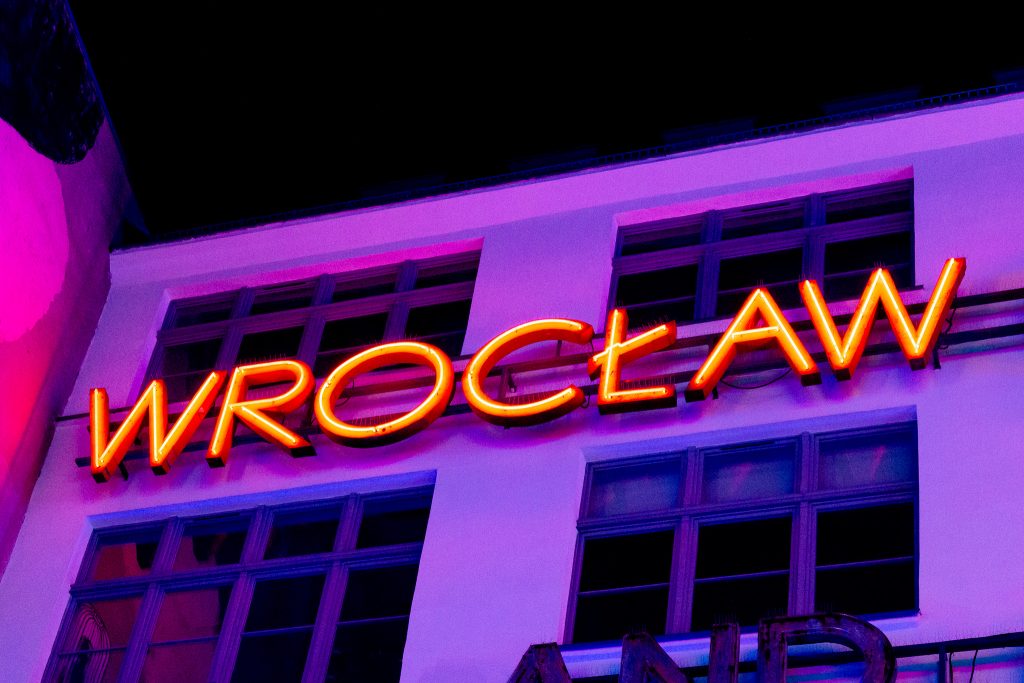
This website uses affiliate links thanks to which we may earn a commission for purchases you made at no additional cost to you. If you like the content, consider using those links to support us. Thank you!
A few words about Wrocław
Wrocław is the third biggest city in Poland located in southwestern Poland, not far from Germany and Czech Republic. It’s the capital of the Lower Silesian Voivodeship, one out of 16 Polish administrative divisions. Wrocław is a very popular travel destination for Poles, and unfortunately often overlooked by foreign visitors in favor of Kraków or Warsaw. An interesting thing is that Wrocław became part of Poland again only in the year 1945, after 610 years of being part of various countries like the Kingdom of Bohemia, the Kingdom of Hungary, the Habsburg monarchy of Austria, the Kingdom of Prussia and Germany.
Wrocław, Poland FAQ
Wrocław is best known for its beautiful and colorful Old Town, hundreds of dwarfs that took over the city, and… the bridges. You see, Wrocław is surrounded by rivers and canals and due to that fact, there are over 130 bridges and footbridges in the city. One of them, Rędziński Bridge, is the longest bridge in Poland (612m). Also, Wrocław is among agglomerations called the Venice of the North, and often is called Venice of Poland.
Since not that long ago, you can also know Wrocław from the famous Netflix TV series – High Water, which focuses on the 1997 flood. Also, Olga Tokarczuk, a Nobel Prize in Literature winner in 2018, comes from and lives in Wrocław. We’ll also add to that list an amazing food scene. Really, so far nowhere in the world, we ate that good.
You can guess how we’ll answer this question – yes, yes, and thousand times yes. Wrocław is charming and colorful. It’s a city where old is intertwined with new, and beautiful with shabby. The city where you’ll find amazing food and drinks with a really wide choice of great restaurants, pubs, and cafes. Also, Wrocław offers a wide variety of activities, of course, led by the search for famous dwarfs. Believe us, you won’t be bored here even for a moment.
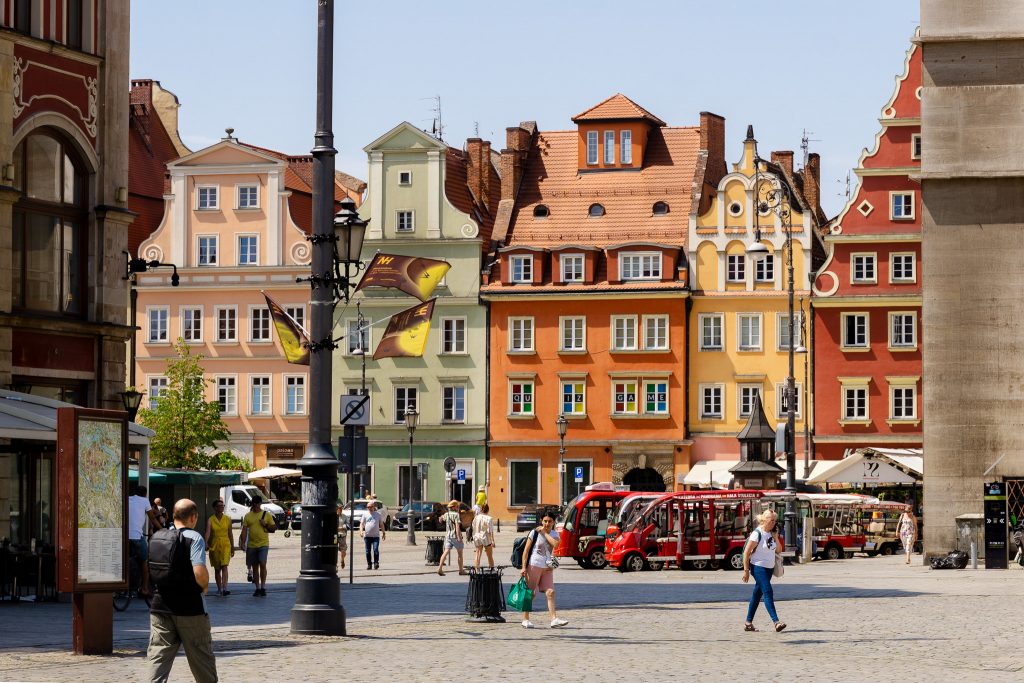

Wroclaw is beautiful all year round, and nothing prevents you from visiting it in any month. But if you can choose a date we recommend visiting in the spring when everything turns green again and comes to life. Then it’s also off-season still so it’ll be cheaper and less crowded.
You can discover the most popular places in Wrocław in two or three days as the city is quite compact and the main sites aren’t too far from each other. Although if you want to get to know it better, without rushing, we recommend staying for at least a week.
Poland’s official language is Polish. But a lot of Wrocław citizens, especially younger ones, can communicate in English. There shouldn’t be any problems in the city center.
Polish zloty, PLN. You shouldn’t have any problems paying by card, but if you want notes there are many places in the city where you can exchange money.
Here we had to help ourselves with the Internet because we had no idea how to write this correctly. So here it is: vrowt-swaaf (en-us) or vrot-swaaf (en-gb). Although we’ll be honest: we, as Polish people, can’t read it correctly from this. So we found a YouTube video for you, where you’ll hear correct Wrocław pronunciation in Polish.
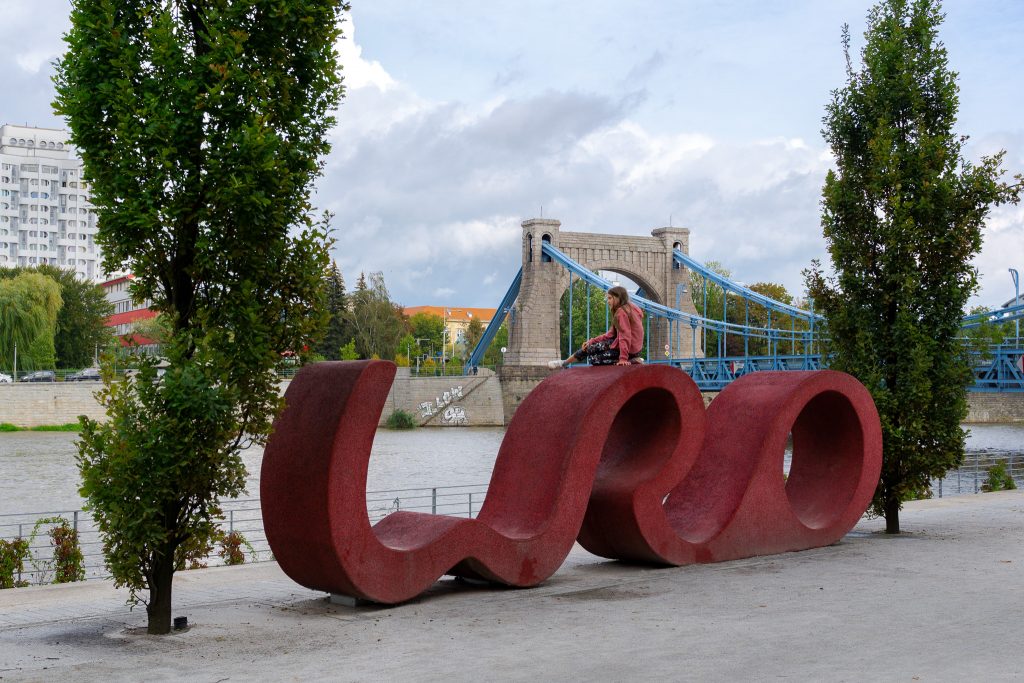

Wrocław is a walkable city, the main sites aren’t too far from each other but sometimes you’ll need to use public transport (bus/tram). But don’t worry as Wrocław is really well connected so it shouldn’t be a problem at all. We don’t recommend renting a car as the city is successively pushing cars away from the city center and it’s quite difficult to find parking spots. If you don’t mind, you can also easily rent a bike or electric scooter and move around even more quickly. You’ll find those all over the city without any problems.
Well, Poland generally is considered to be a cheap European country. Currently (2022), inflation is hitting hard (17.9%) and prices went up. But if you’re earning in one of the strong currencies you shouldn’t be worried – you probably won’t spend a fortune there.
Planning to stay in Wrocław for a longer period of time but curious about the prices? Check out our “Real cost of living in Poland as a digital nomad” post. 💰
Uff, that was a lot of questions to answer! So now it’s time to finally show you our beautiful city and all the amazing things to do in Wroclaw.

Dwarfs hunting in Wroclaw
Dwarf hunting is probably the most popular thing to do in Wrocław among tourists, and it doesn’t surprise us at all. It’s fun for all, both small ones and big ones. These cute little creatures started to take over Wrocław about 20 years ago and now no one really knows how many of them are here. The newest information we found says that there are more than 800 of them all around the city (May 2023). Fun fact: every year in September, the city organizes the festival in their honor: Wroclaw Dwarf Festival (pl: Wrocławski Festiwal Krasnoludków), with many activities aimed at the youngest ones.
How to find all the Wroclaw’s dwarfs?
You can spot dwarfs all over the city, not only in its center. The two most popular options to find most of them are:
- Head to the Krasnal Info – Tourist Information, located in Market Square where you can buy maps with dwarfs locations, as well as many dwarf souvenirs. The exact location you’ll find on the map at the end of the post.
- Download the “Wrocławskie Krasnale” app on App Store or Play Store
Of course, you can also hunt for them without any help, while sightseeing in the city.

Where exactly did these dwarfs come from?
The genesis of the dwarfs in Wroclaw comes from the Orange Alternative (Ruch Pomarańczowa Alternatywa). It was a movement that was peacefully fighting against the absurdities of the communist times, in the 1980s, with the help of humor. During that time activists painted anti-communist slogans and inscriptions all over the city. Authorities painted them over and then in turn, as an act of protest, activists decorated them with the figure of a smiling dwarf in an orange hat and a flower in hand.
The first dwarf, Papa Krasnal (eng. Papa Dwarf) appeared in Wrocław in June 2001. Once he was an engaged activist of the Orange Alternative, now he’s resting on a well-deserved retirement, performing the function of the chairman of the Wroclaw Council of Dwarfs (which shouldn’t be surprising as he’s the biggest, the oldest, and (probably) the wisest of all).
The rest of the dwarfs started moving into Wrocław since 2005. We guess they really like the city as new ones are constantly coming.
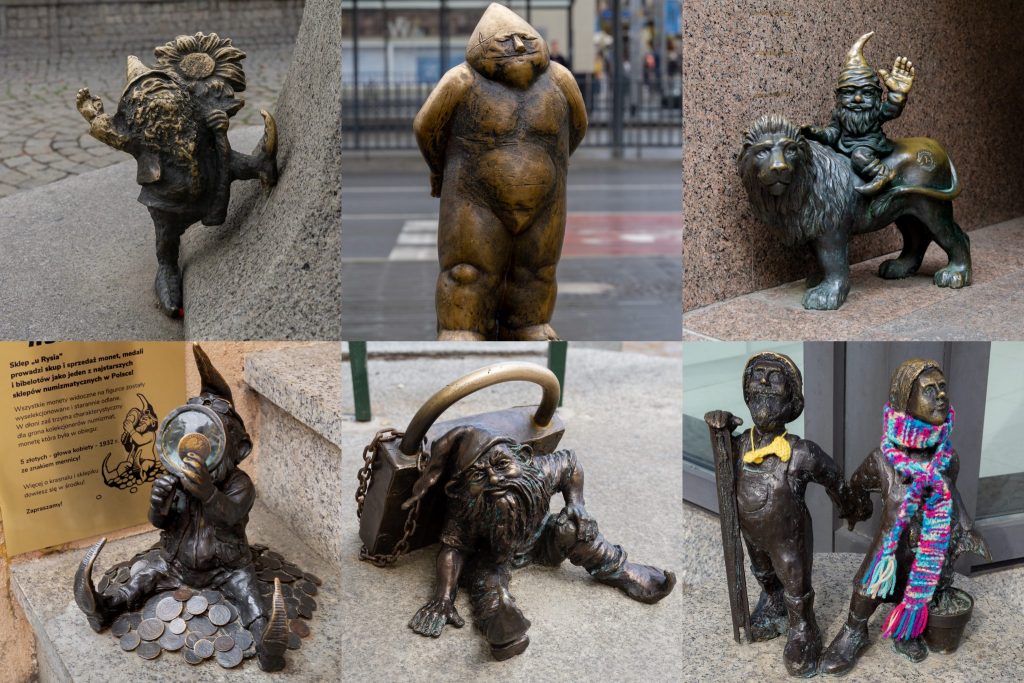
Best things to do in Wroclaw Old Town
Wrocław Main Market Square
Wroclaw Main Square (pl. Rynek Wrocławski) is one the oldest and largest market squares in Poland and in Europe. Brick houses started to appear in the square in the 13th century, and during the following years, they came through many architectural changes. During World War II about 60% of the buildings around the market square were destroyed. Later, in the 60s, they were carefully rebuilt, to the look you can admire today.
The most peculiar thing about the Wrocław market square is the fact that its central part, the mid-market block, is twisted by 7° clockwise compared to the rest of the buildings. Why it looks like that is a mystery – one says it was the builders’ mistake, other that it was a planned action to simply create a larger commercial square.
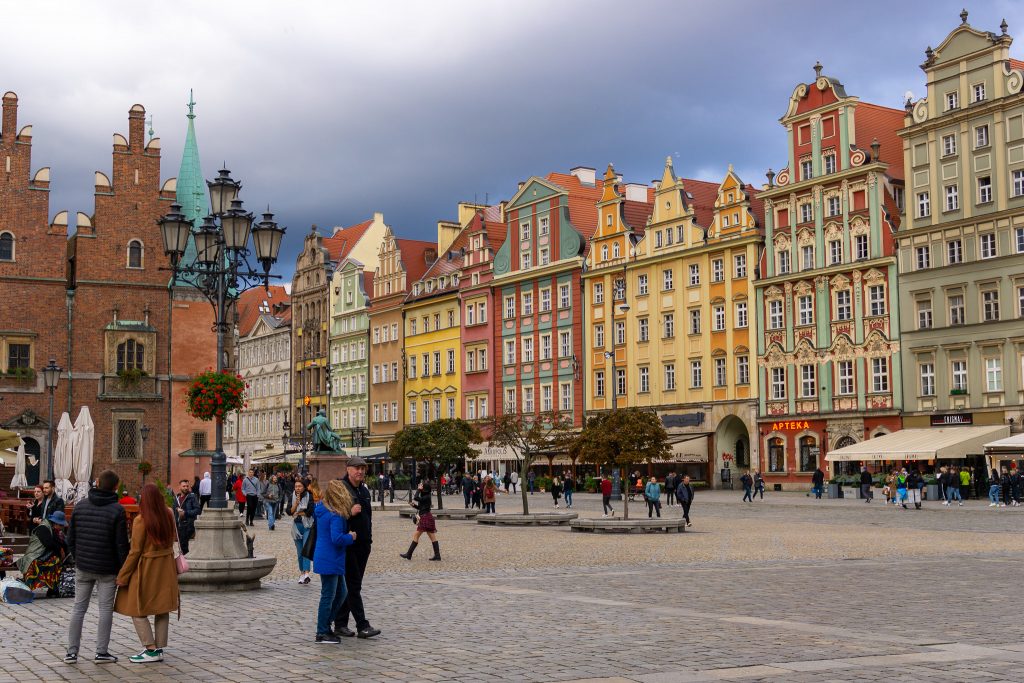


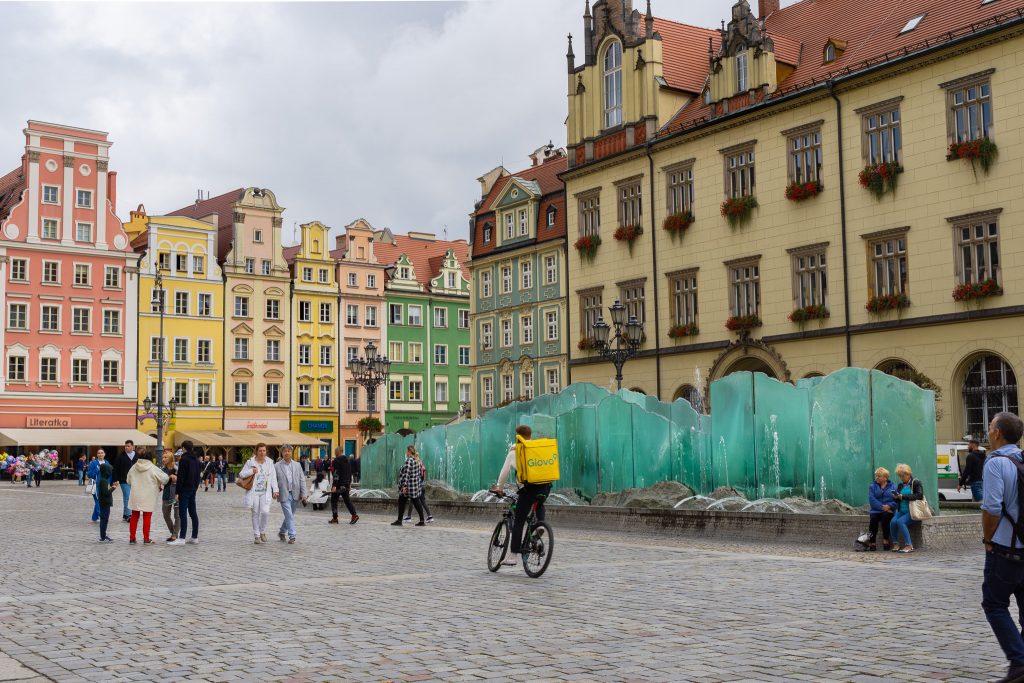
Currently Wrocław Main Market Square is vibrant, colorful, and always full of life. You’ll find there many restaurants and cafes, shops, and certainly, you’ll come across street artists who will try to entertain you. Visiting Wrocław Market Square is definitely the best thing to do in Wrocław that simply can’t be missed.
Important note for dwarf hunters: market square (and its surroundings) is a place where you’ll find most dwarfs.
Must-have places to visit in Wroclaw Main Market Square: Town Hall, St. Elisabeth’s Church, St. Mary Magdalene Church, Zdrój Fountain, Pranger, as well as Cloth Hall.
Interesting fact: there are two other market squares in Wrocław – Plac Solny and Plac Nowy Targ, both in very close proximity to the main square.
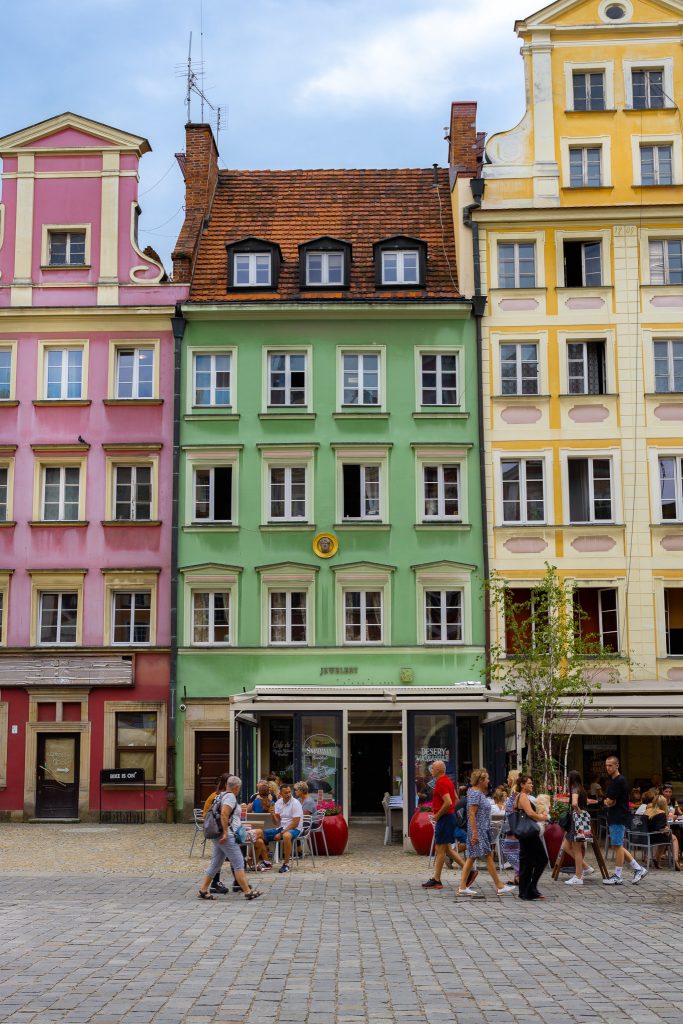
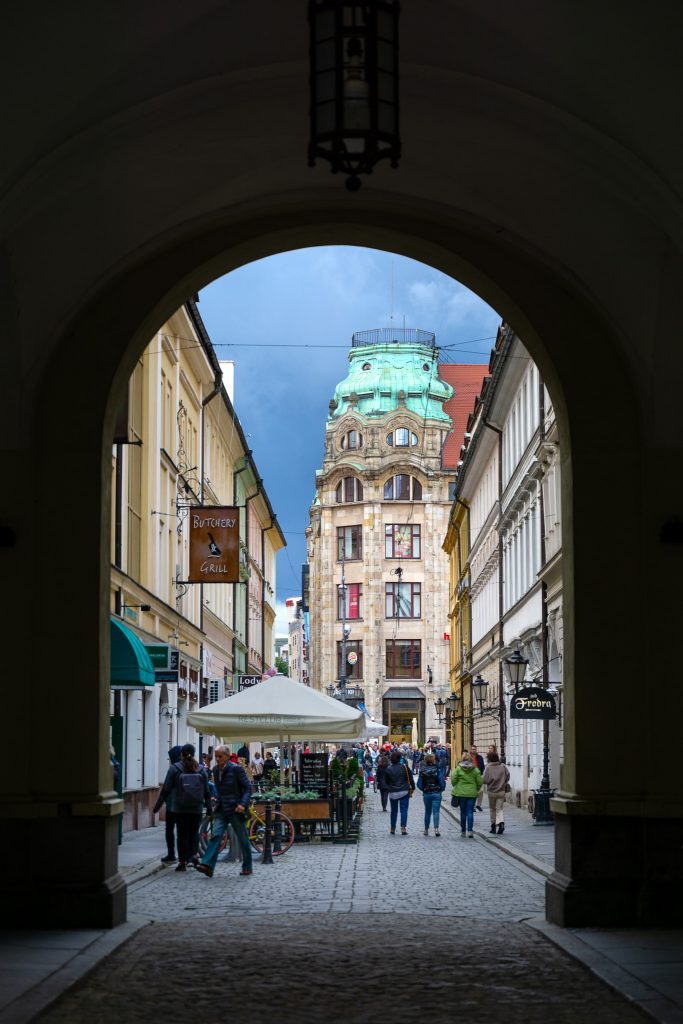
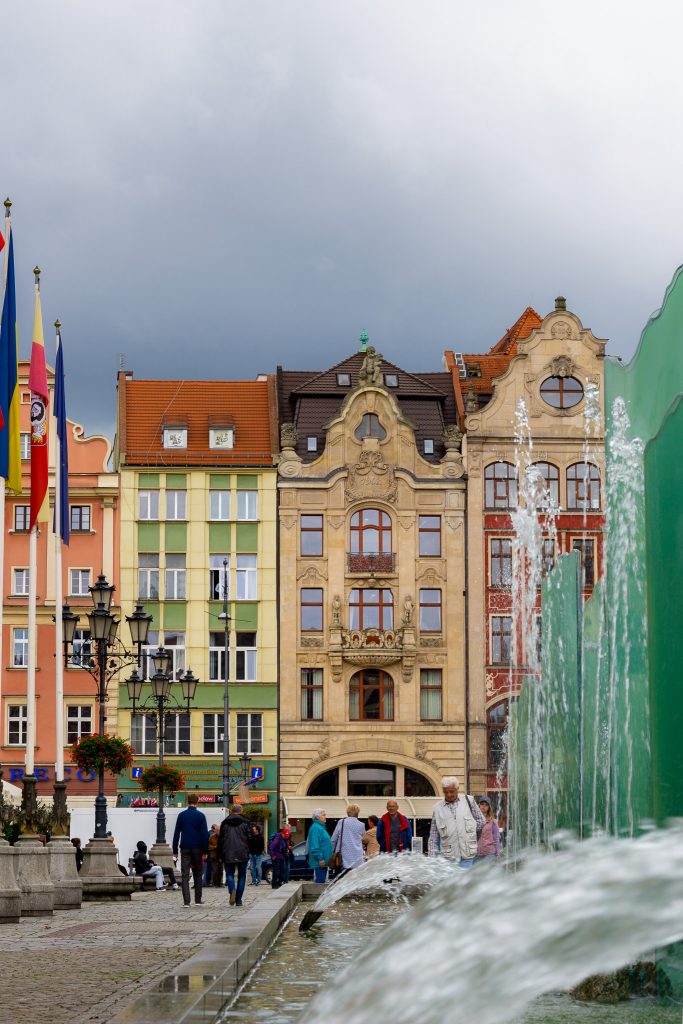
Oh, one more thing – the square looks truly amazing at night! If you get a chance – see for yourself.
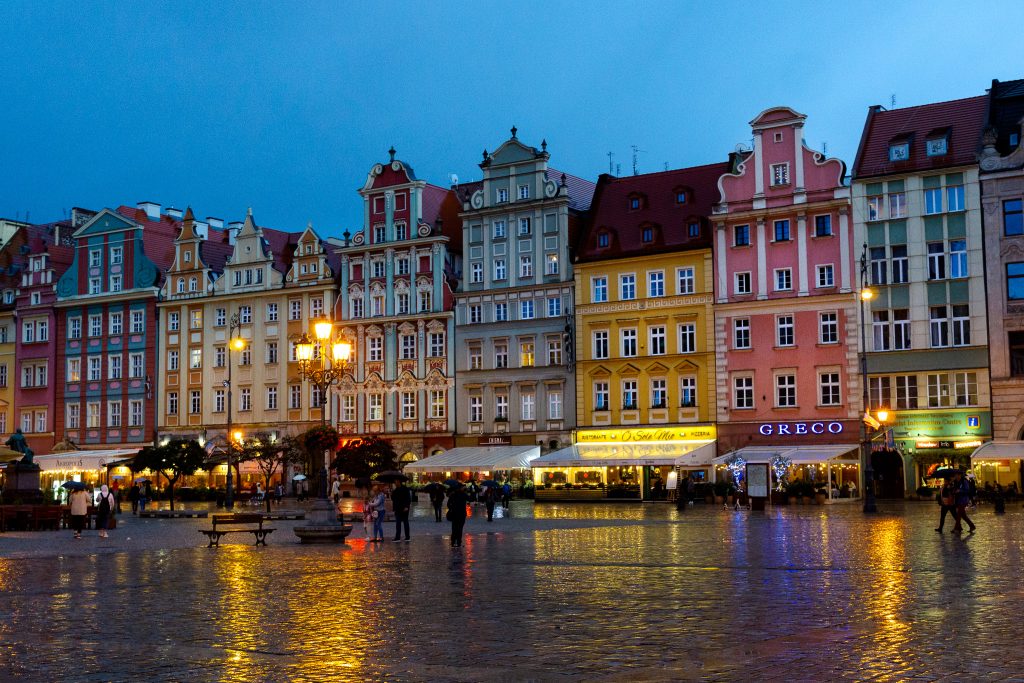

Wrocław Town Hall
Wrocław Town Hall (pl. Ratusz we Wrocławiu) is one of the oldest town halls in Poland, as well as one of the best-preserved. It was built in several stages over about 250 years, between the end of the 13th century to the 16th century. Over the next few hundred years, it was renovated and rebuilt several times. Thankfully, during World War II Town Hall suffered only moderate damages and full renovation after the war ended in 1953.
Currently, Wrocław Town Hall houses a Museum of Bourgeois Art (pl. Muzeum Sztuki Mieszczańskiej), which is a branch of the Wrocław City Museum (pl. Wrocławskie Muzeum Miejskie).
In the Town Hall cellars, you’ll also find Piwnica Świdnicka (eng. Świdnicka Cellar) – it’s the oldest medieval restaurant in Poland and one of the oldest in Europe. It’s been operating since 1273! In July 2022 it reopened again, after 5 years of renovations.
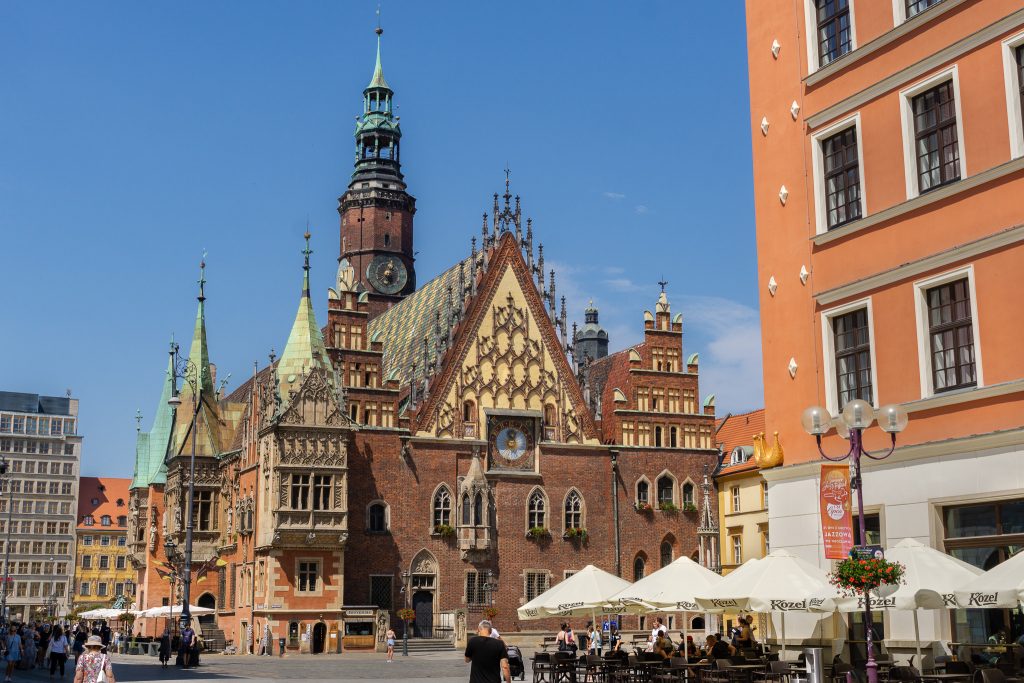
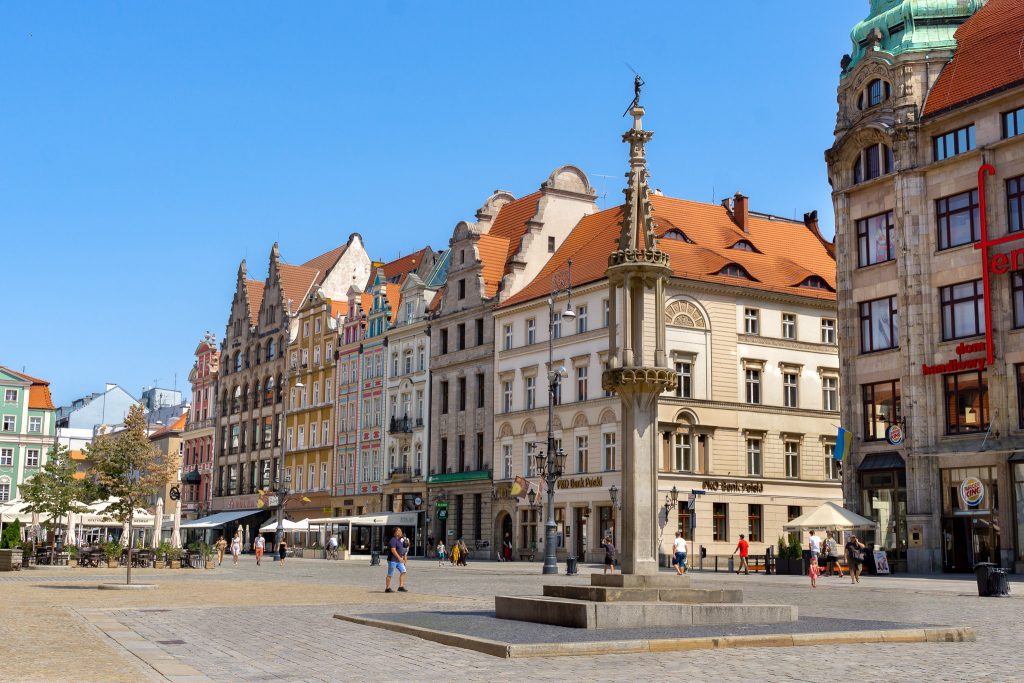
Pranger of Wrocław
Right in front of the Wrocław Town Hall you’ll find a pranger (pl. Pręgierz). It’s a place that was used for punishments. Depending on the crime a person was tied to it for several hours, whipped, or even executed. Currently, pranger is a popular meeting place.
The Salt Square
The Salt Square (pl. Plac Solny) is one of three market squares in Wrocław, it acts as an auxiliary market for the main market square. It exists since 1242. In the past traders sold mainly salt from the Wieliczka and Bochnia salt mines, but also honey, wax, or leather goods. Currently, many flower stands dominate the area and some of them are open even 24h a day. Wouldn’t buying flowers at midnight (either for yourself or a loved one) be a great and unique thing to do in Wrocław?
Interesting fact: under Salt Square, there is a bomb shelter that was created during World War II. It can fit about 300 people.


St. Mary Magdalene Church with Bridge of Penitents
Among the best things to do in Wrocław is visiting St. Mary Magdalene Church (Kościół Św. Magdaleny). It was built in the 13th century (1226-1232), which makes it one of the oldest churches in Wrocław. Like many other buildings in the market square, it was heavily damaged during WWII – about 70% of it was destroyed. The reconstruction started in 1946 and ended in 1953.
The church is definitely most popular for its spectacular Wrocław views from the Bridge of Penitents (pl. Mostek Pokutnic). It’s a footbridge at an altitude of 45m that connects two towers of Mary Magdalene church. Keep in mind that there is no elevator to the top, and you’ll have to climb all 247 stairs. But the views are definitely worth it!
Entrance to Bridge of Penitents cos: normal – 10zł, reduced – 5zł (October 2023). For current prices and opening hours visit visitwroclaw.eu website.
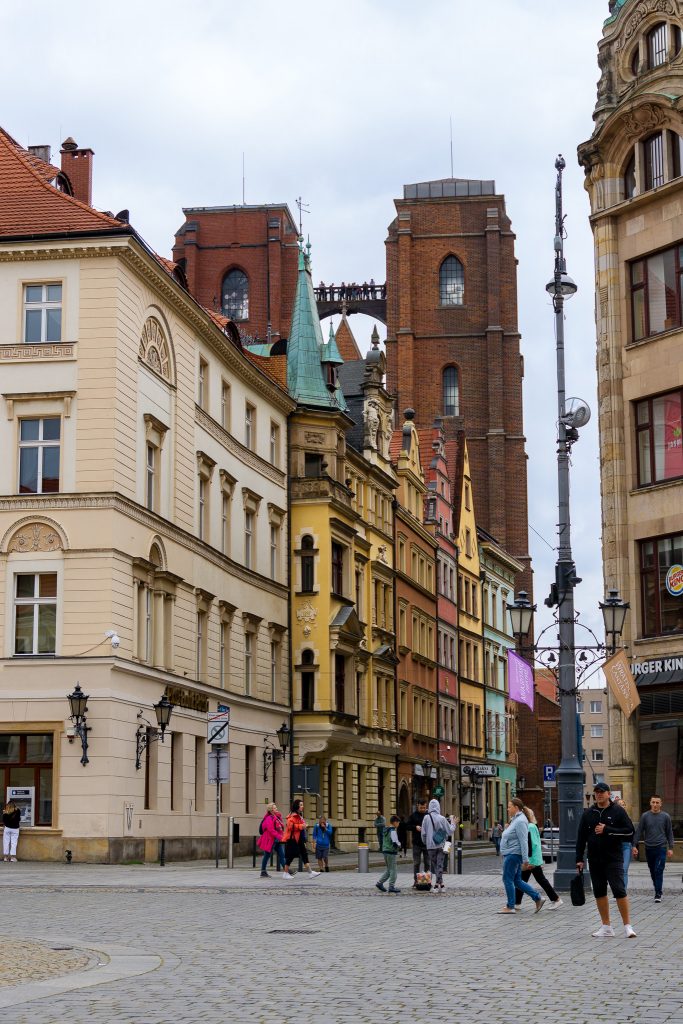

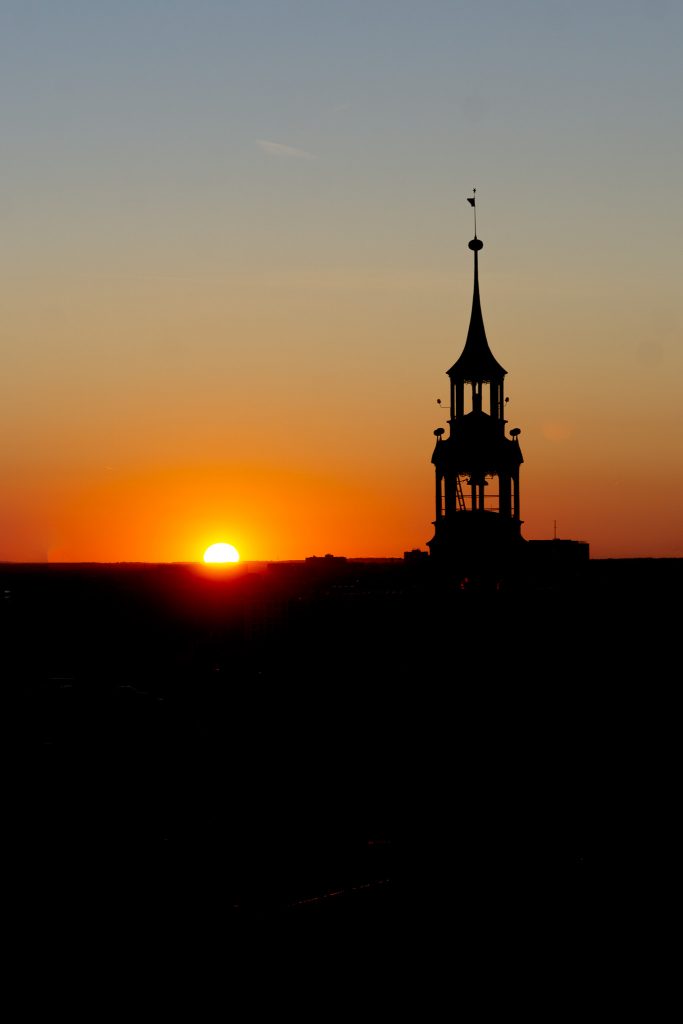
Why is the bridge called the Bridge of Penitents?
The legend says that women who instead of starting a family and living faithfully to one man preferred to lead a debauched lifestyle, were locked up there. As punishment, they had to sweep the bridge and weren’t allowed to leave it. It’s said that up to this day, you can hear the sounds of sweeping as well as groans and wails of the spirits of the penitents who died there.
Here you can read (in Polish/English/German) a slightly different and more extensive version of this legend, featuring Tekla i Martynka (two dwarfs on the bridge).
Interesting fact: the bridge of Penitents is also called the Witches’ Bridge (pl. Mostek Czarownic). Why? Well, during the times when witches were hunted, crossing the narrow bridge was a test – when a person suspected of witchcraft managed to walk from one end of the footbridge to another, she was accused of possessing evil powers that helped her (and later such a person was burned at the stake). When she failed to pass the test and fell down then, well… the problem solved itself. But at least she was acquitted and cleared of charges, right?
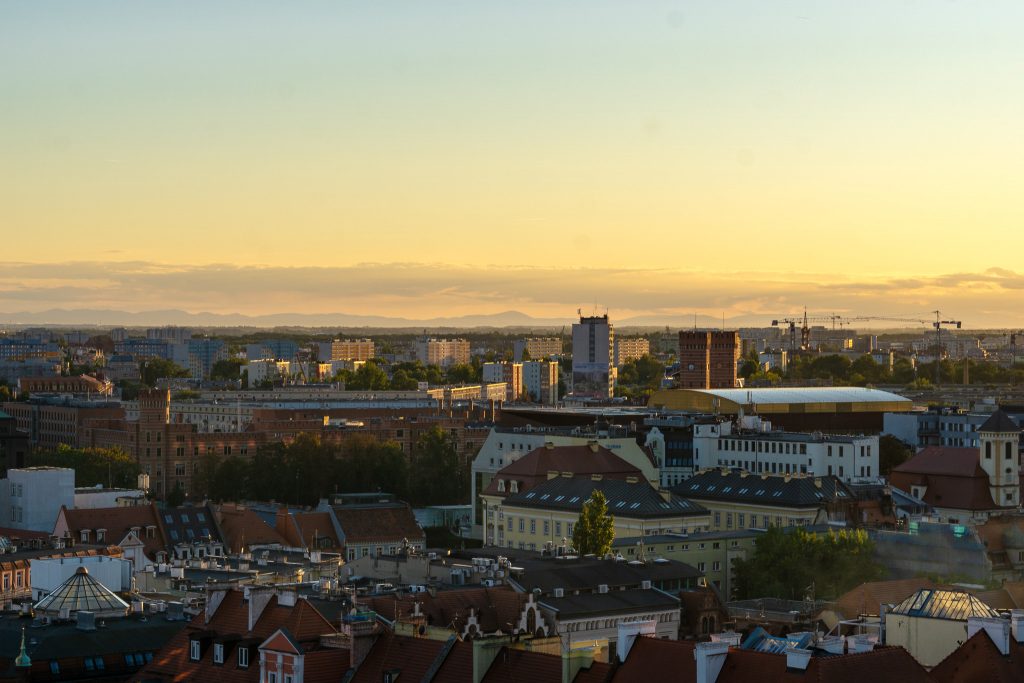
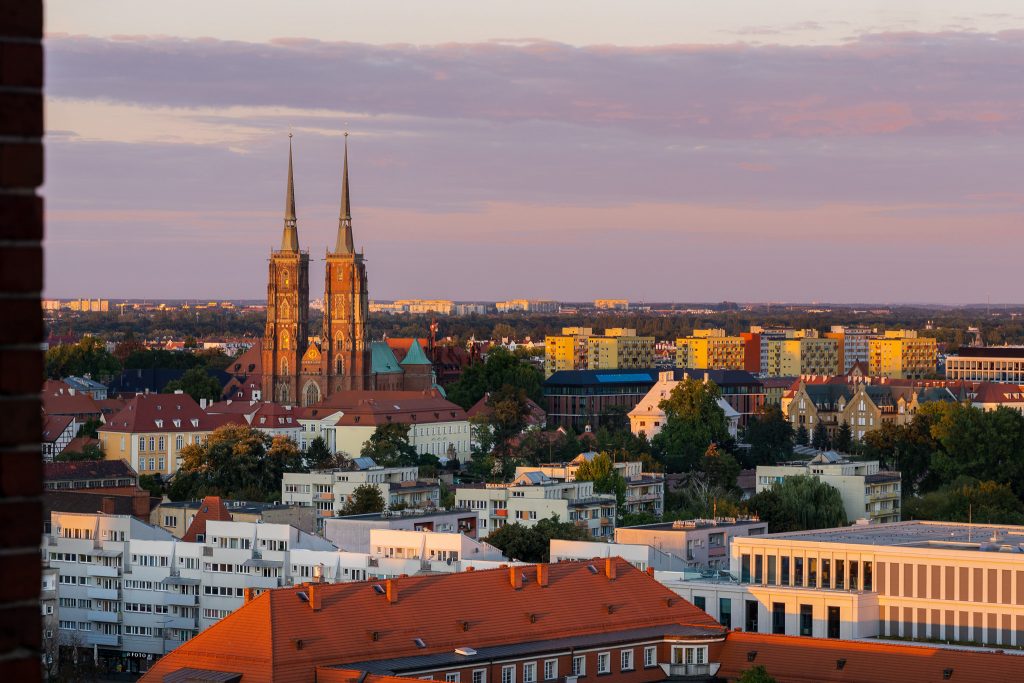
St. Elizabeth’s Church with an observation deck
St. Elizabeth’s Church (pl. Bazylika św. Elżbiety) is located on the market square. It’s most popular for its observation deck on the church tower, at an altitude of 75m. To get there you’ll have to climb more than 300 stairs, but panoramic views over the city will make up for the effort.
The entrance to St. Elizabeth’s Church tower cost: normal – 10zł, reduced – 5zł (October 2023). For current prices and opening hours visit visitwroclaw.eu website.
Hansel and Gretel Houses
Hansel and Gretel houses (pl. Kamieniczki Jaś i Małgosia) stand in front of St. Elizabeth’s Church. These are two medieval buildings, tenement houses, built in the 15th century, connected by an arched gate. Where did the name come from? Many think that houses look like they are holding hands, like Hansel and Gretel from the fairy tale.
If you’re wondering which building is which: Hansel (Jaś) is the smaller and simpler one, and Gretel (Małgosia) is taller and richly decorated.
Four Denominations District
Four Denominations District (pl. Dzielnica Czterech Świątyń) is a small area in the Wrocław Old Town where you can find four places of worship for different denominations in really close proximity. These are Orthodox Cathedral, Roman Catholic Church, Augsburg Evangelical Church, and the Synagogue. It’s also an area where you’ll find one of the finest Wrocław restaurants, cafes, and bars.

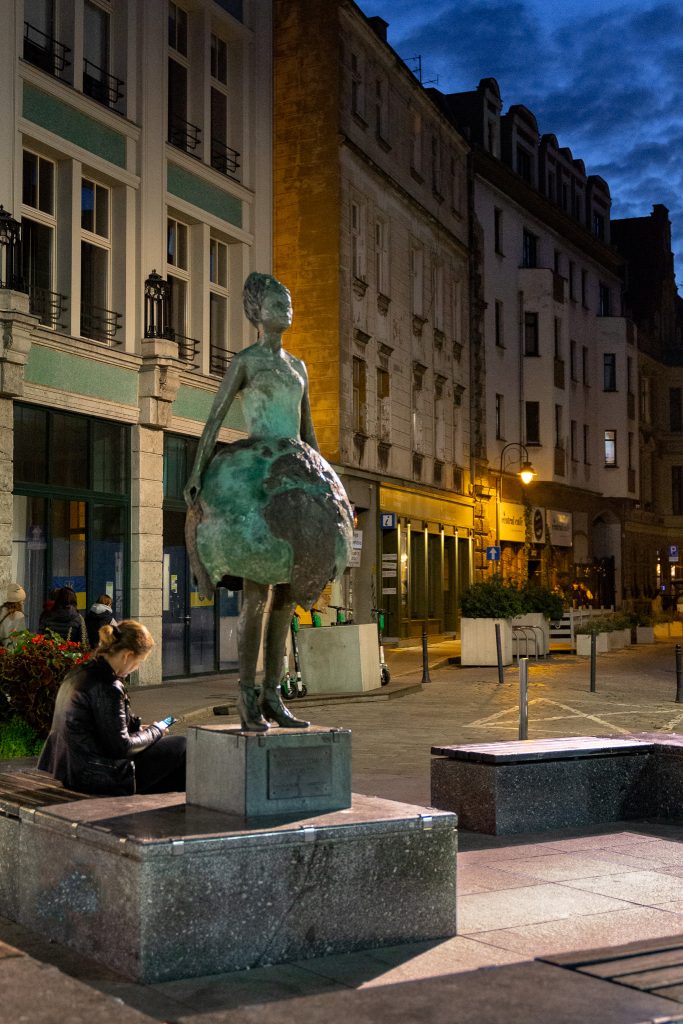

Neon Side Gallery
Visiting Neon Side Gallery (pl. Galeria Neonów) without a doubt is one of the best and most unique things to do in Wrocław. It’s located in the small, hidden courtyard between Ruska and Antoniego streets. Once you pass the gates you’ll find yourself in a completely different world, filled with neon signs, murals, workshops, and art galleries. The place was created in 2005 when a local man bought here the first neon that was supposed to be destroyed. Now the place hosts about 30 neon signs that in the past shops, companies, restaurants, etc used for advertising. The courtyard is worth seeing at any time of day, but after dark, it’s most impressive.


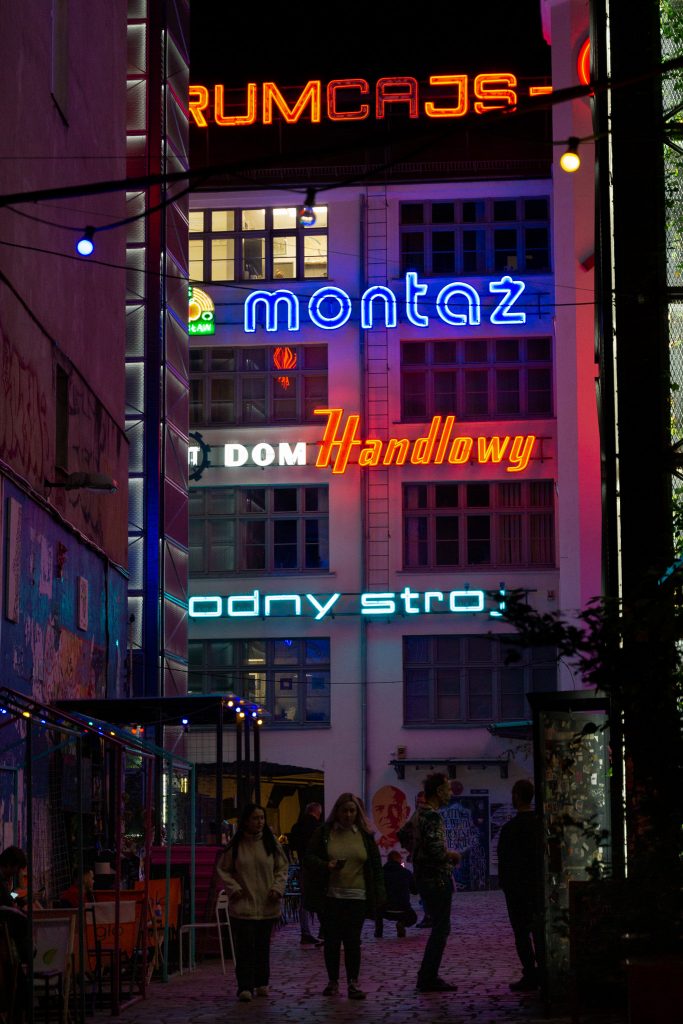
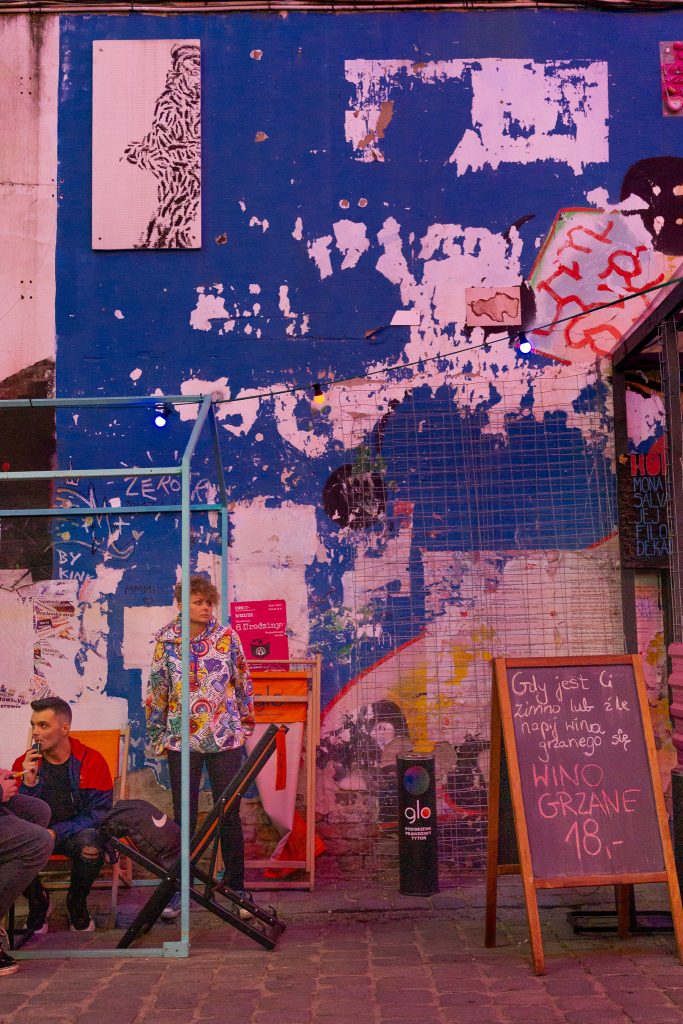
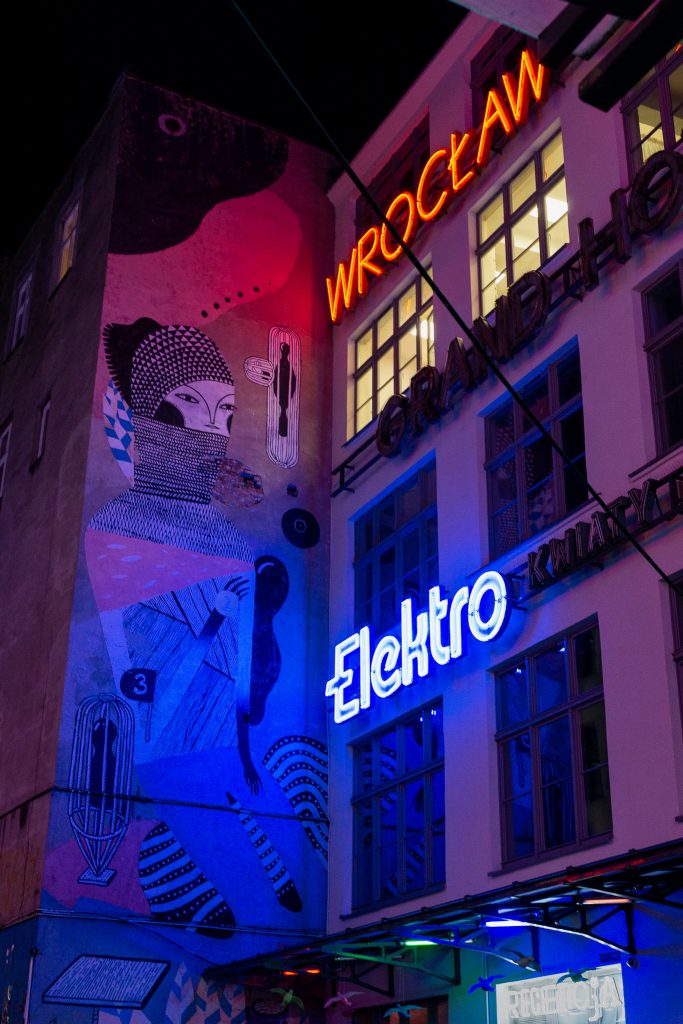
The Shambles
The Shambles (pl. Stare Jatki) are often considered as a hidden gem near Wrocław Market Square. It’s a short street, one of the oldest in the city, where in the past butchers were located. Today it’s a place where you can find many small art galleries one dwarf as well as a Slaughtered Animals Monument (pl. Pomnik ku czci Zwierząt Rzeźnych).
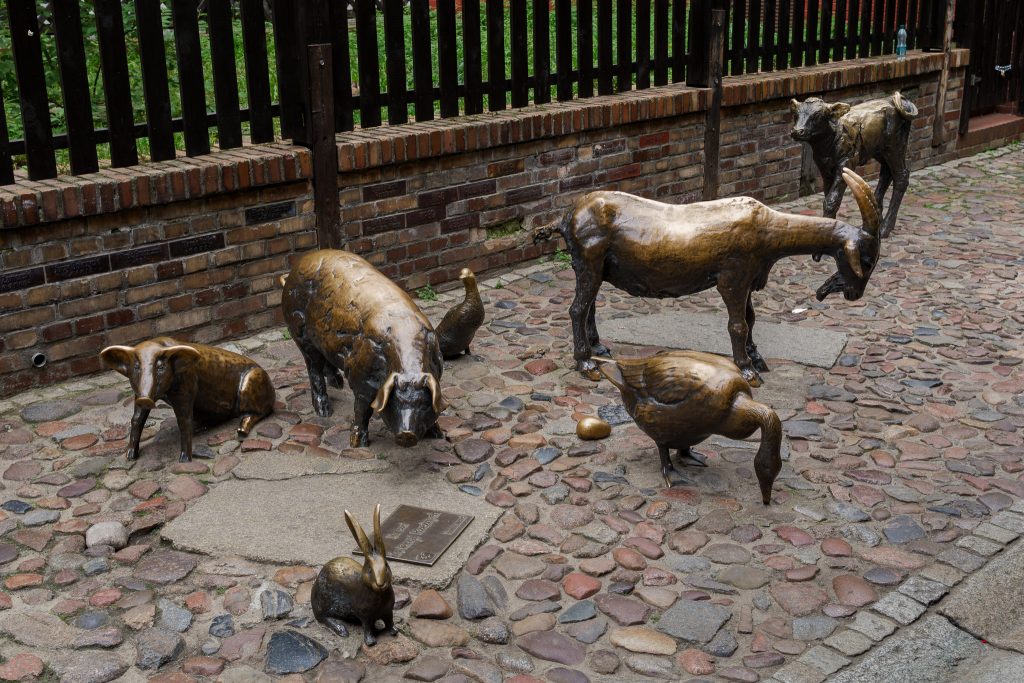
Mathematical Tower Of Wroclaw University
Mathematical Tower Of Wroclaw University (pl. Wieża Matematyczna Uniwersytetu Wrocławskiego) was built in the 18th century and initially was used as an astronomical observatory (that’s why it’s also sometimes called the Astronomical Tower). Currently, it’s another great city viewpoint – from the terrace at a height of 42m, visitors can admire great views over Słodowa Island and the Old Town.
You’ll need to buy a ticket to enter the Mathematical Tower. The Mathematical Tower is part of the Museum of the University of Wrocław which also includes: Aula Leopoldina, Oratorium Marianum, and exhibition rooms. The ticket price depends on how many parts of the museum you want to visit 2,3 or 4). Please check current prices on the official museum website.
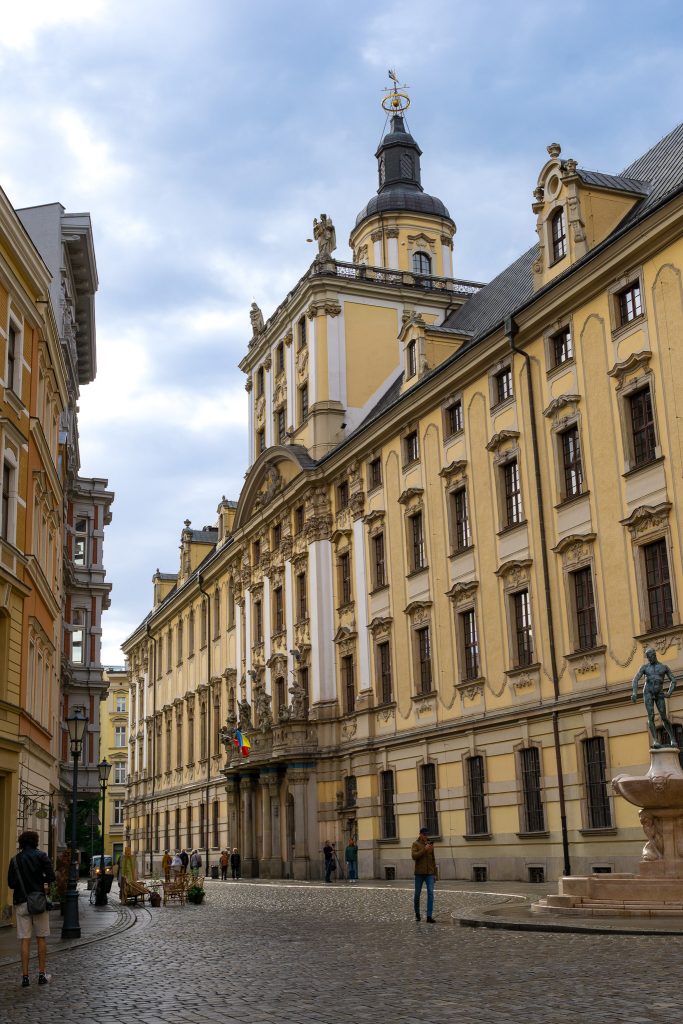
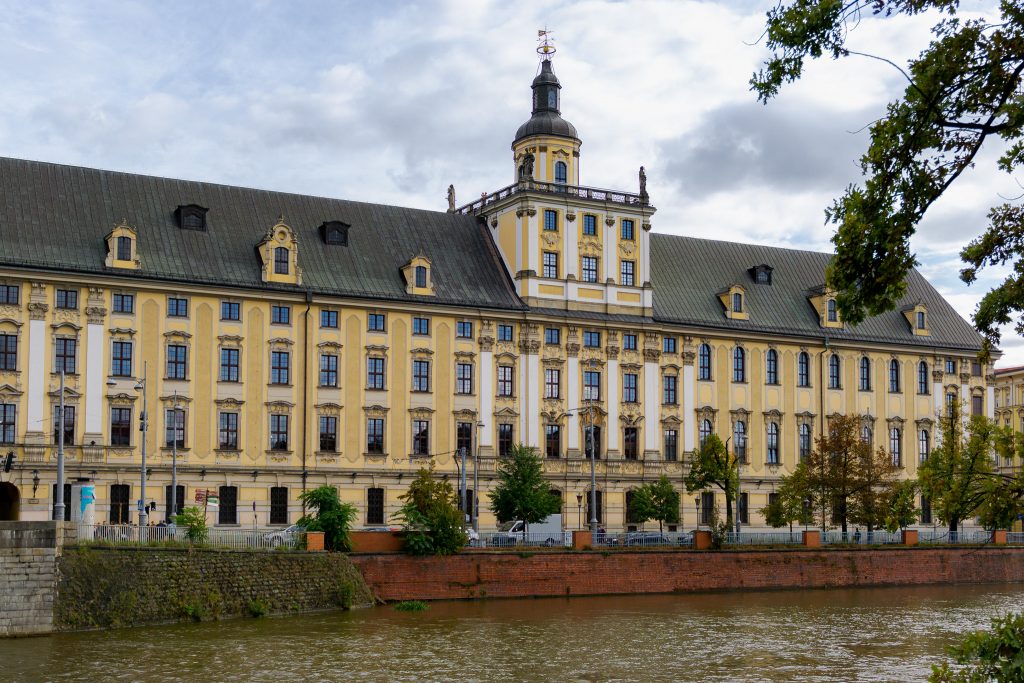
Słodowa Island
Another great thing to do in Wrocław, especially while near the Mathematical Tower, is visiting Słodowa Island (pl. Wyspa Słodowa). It’s one of a few Oder Islands (pl. Wyspy Odrzańskie) in the city. It’s a really popular meeting place, especially on warmer days in spring and summer. On Słodowa Island you’ll find some restaurants and bars, where you can enjoy a meal with great views over the Odra river and Old Towns’ buildings.
Fun fact: on Słodowa Island you can safely drink alcohol in public.
While on Slodowa Island take a walk across other islands in the area: Mlynska Island (pl. Wyspa Młyńska), Sand Island (pl Wyspa Piasek), Bielarska Island (pl Wyspa Bielarska), and Tamka Island (pl. Wyspa Tamka).
Walk along the Wrocław city moat
Another great way of discovering the best places in Wrocław Old Town is walking along its moat (pl. Fosa Miejska we Wrocławiu). What we see today are the remains of the original 13th-century fortifications. Actually, back then there were two moats in the city – outer and inner, about 300 meters apart. In the 19th century, Napoleon Bonaparte’s brother – Jérôme ordered to bury the inner moat. Thankfully, significant fragments of the outer moat survived and as a result, today it serves as a lovely leafy Old Town Promenade (pl. Promenada Staromiejska), perfect for long walks.
The city moat starts near Galeria Dominikańska shopping center and OVO building and runs up to Sikorski Bridge where it almost connects with the Oder river.
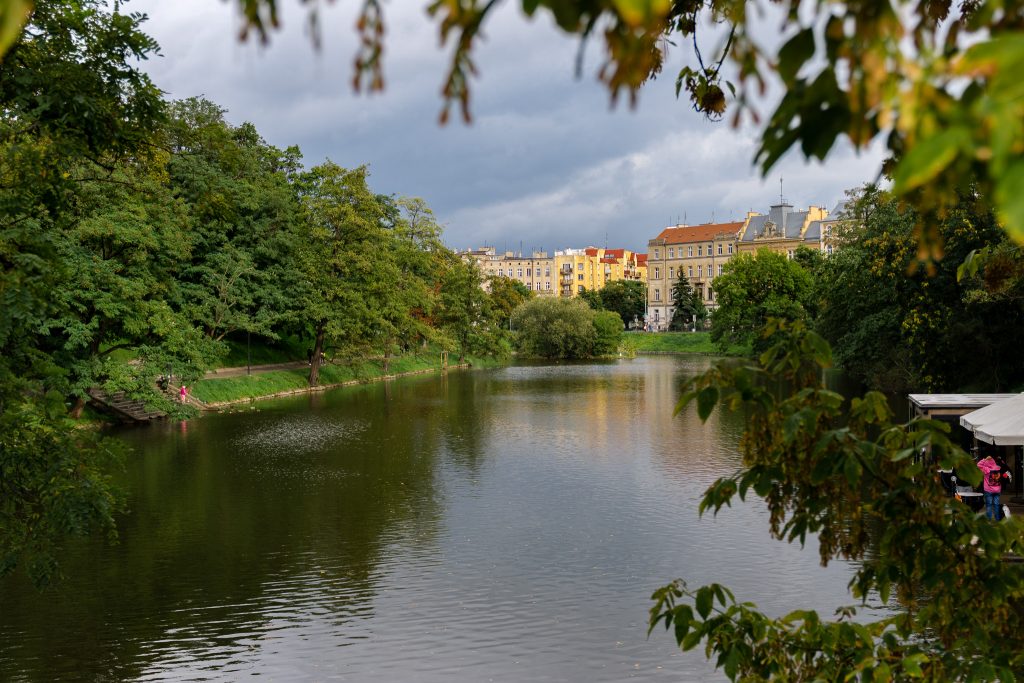
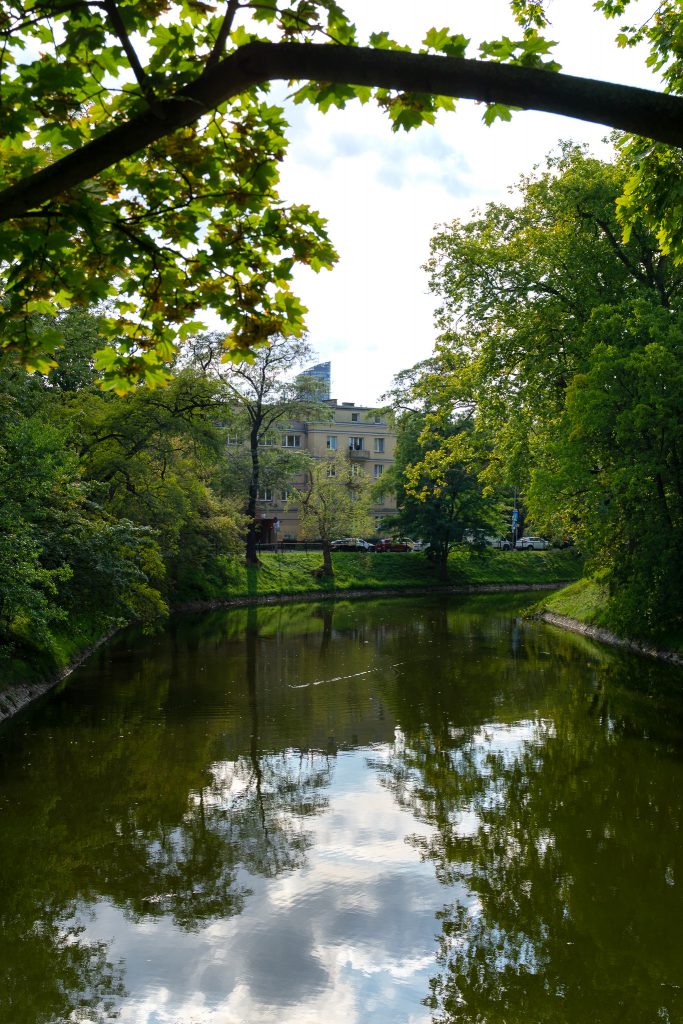
Along Wrocław city moat you’ll find interesting places like:
- OVO modern and unique-looking building, a place that embraces curiosity and innovation (like the official website says)
- Partisan Hill (pl. Wzgórze Partyzantów) – remains of the old fortification system, a lovely green area with multiple places to sit and relax while watching swans, ducks, and other birds.
- Nicolaus Copernicus Park (pl. Park Mikołaja Kopernika) – a tiny yet beautiful park in the city center, full of green spaces perfect for relaxing. There is also a small carousel, great for entertaining little ones.
- Wrocław Puppet Theater (pl. Wrocławski Teatr Lalek) – beautiful Neo-Baroque building located on the edge of Copernicus Park. Today it’s an important European center of puppetry.
- National Forum of Music (pl. Narodowe Forum Muzyki) – postmodern building completed only in 2015. It houses a large concert hall with 1800 seats and three chamber halls with 250–450 seats.
- Royal Palace (pl. Pałac Królewski) – located right next to the National Forum of music, originally belonged to the Prussian monarchy. Now it houses the Wroclaw City Museum.
- Wrocław Opera House (pl. Opera Wrocławska) – the building is located on Świdnicka Street, right next to the National Forum of Music. It was opened in 1841 and until the end of the war, it was named Oper Breslau (Breslau=Wrocław in German). The building facade is distinguished by a row of 6 columns. Inside, the main hall also makes a striking impression.
- District Court and prison (pl. Sąd okręgowy i areszt śledczy) – unique castle-looking red-buildings, dating back to the mid-19th century. Looking a bit like the main Wrocław train station, isn’t it?
- Wrocław Świebodzki Railway Station (pl. Dworzec Świebodzki) – railway station which has been out of use since 1991. It’s the oldest one of three Wrocław railway stations, located in the center of the city, only 800m from the main square. Currently, it’s a place with pubs, restaurants, and the Museum of Games and Computers of the Past (pl. Muzeum Gry i Komputery Minionej Ery).

Best things to do in Wroclaw near Ostrów Tumski
Cathedral Island (pl. Ostrów Tumski) is the oldest part of Wrocław, featuring many religious buildings. Once it was indeed an island on the Oder River, but in the 19th century Jérôme Bonaparte ordered to bury it. Ok, let’s go and discover things to do in Wroclaw near Ostrów Tumski / Cathedral Island.
Cathedral of St. John the Baptist
The Cathedral of St. John the Baptist (pl. Katedra św. Jana Chrzciciela) dates back to the 13th century and is probably the most impressive building in Ostrów Tumski. Its tower is almost 100m high and as a result, serves as a great viewpoint over the city (there’s an elevator). Also, there is the largest pipe organ in Poland in the center of the church.
Entrance to the Cathedral of St. John the Baptist cost: normal – 20zł, reduced – 15zł (October 2023). Current prices can be checked on the Cathedral’s official website.
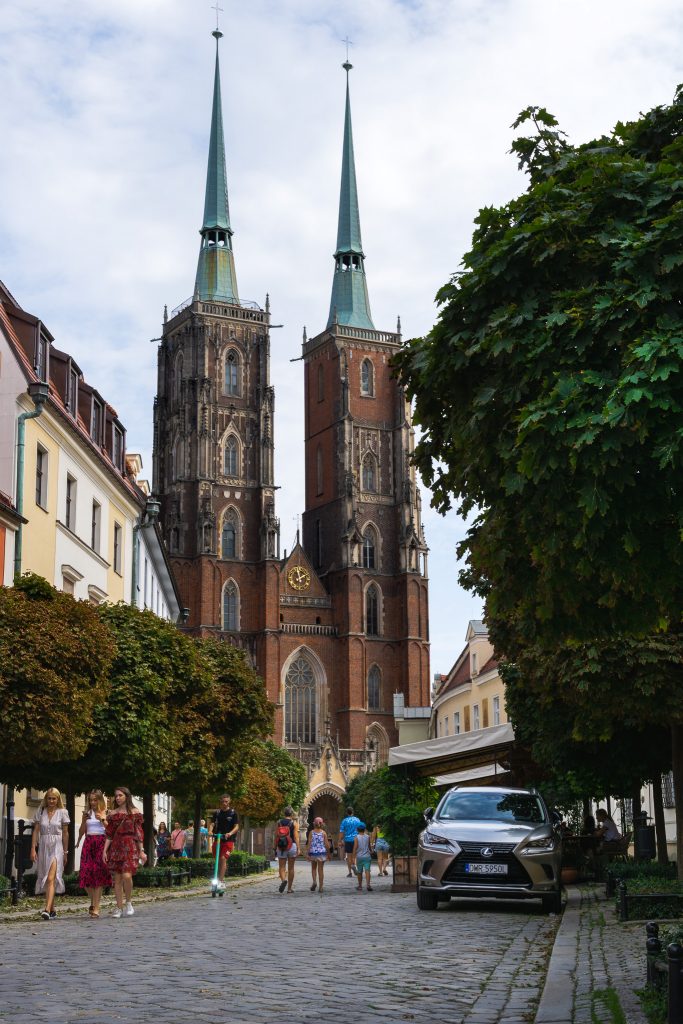
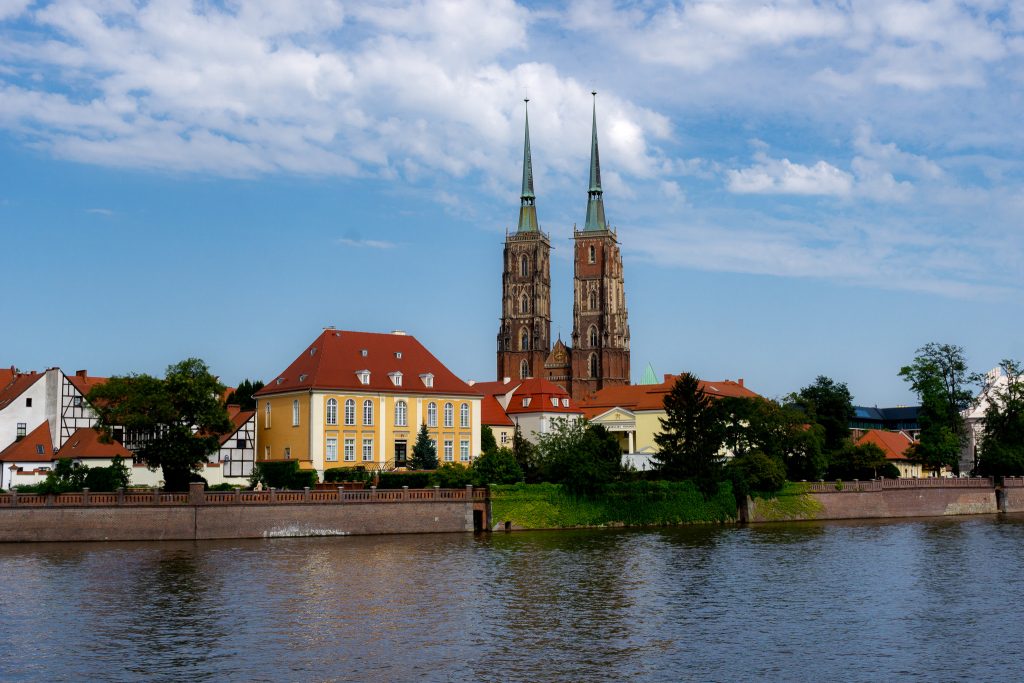
Collegiate Church of the Holy Cross and St. Bartholomew
Collegiate Church of the Holy Cross and St. Bartholomew (pl. Kolegiata Świętego Krzyża i kościół św. Bartłomieja) is a two-storey brick church with two towers on Cathedral Island, just a few steps from Cathedral of St. John the Baptist. The upper church is dedicated to Holy Cross, and the lower one to St. Bartholomew.
Tumski Bridge
Another great thing to do in Wrocław is exploring Tumski Bridge (pl. Most Tumski) which connects Ostrów Tumski with Sand Island (pl. Wyspa Piasek). It’s also called Lovers Bridge. Not that long ago it was full of padlocks that lovers left there to celebrate their feelings. After the renovation dwarfs are keeping an eye out for those wanting to hang a padlock again. From the bridge, you can admire lovely views over the Oder river, Bulwar Dunikowskiego, and part of the Nadodrze district.
Tumski Bridge is also a place where about half an hour before sunset you’ll see a lamplighter who walks around and lights up 103 original gas lamps. It’s the only place in Poland with such a unique attraction.

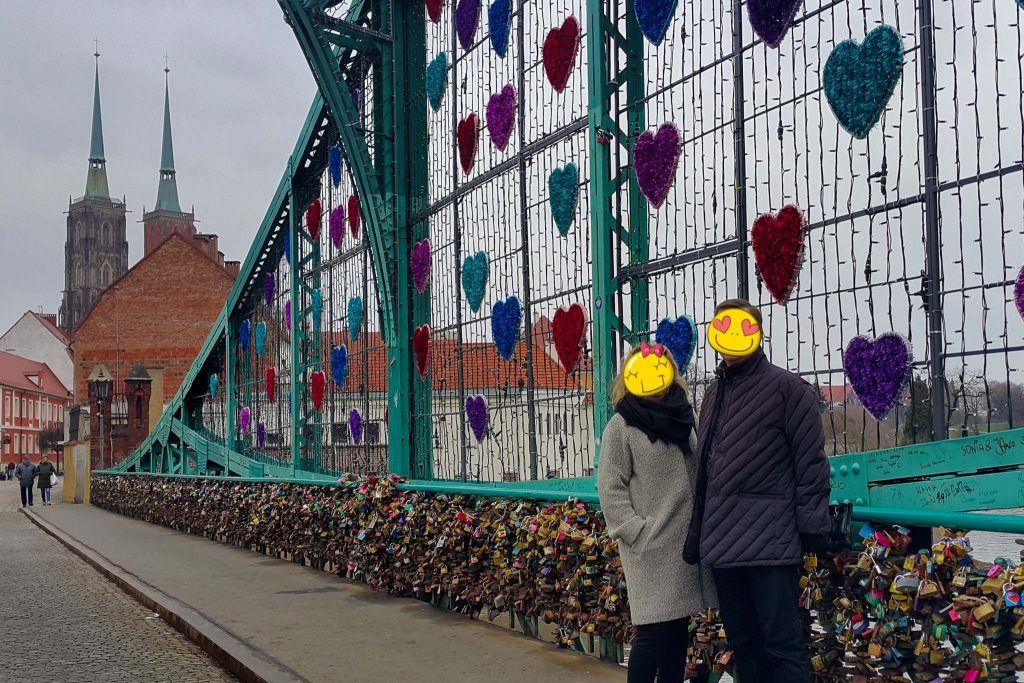
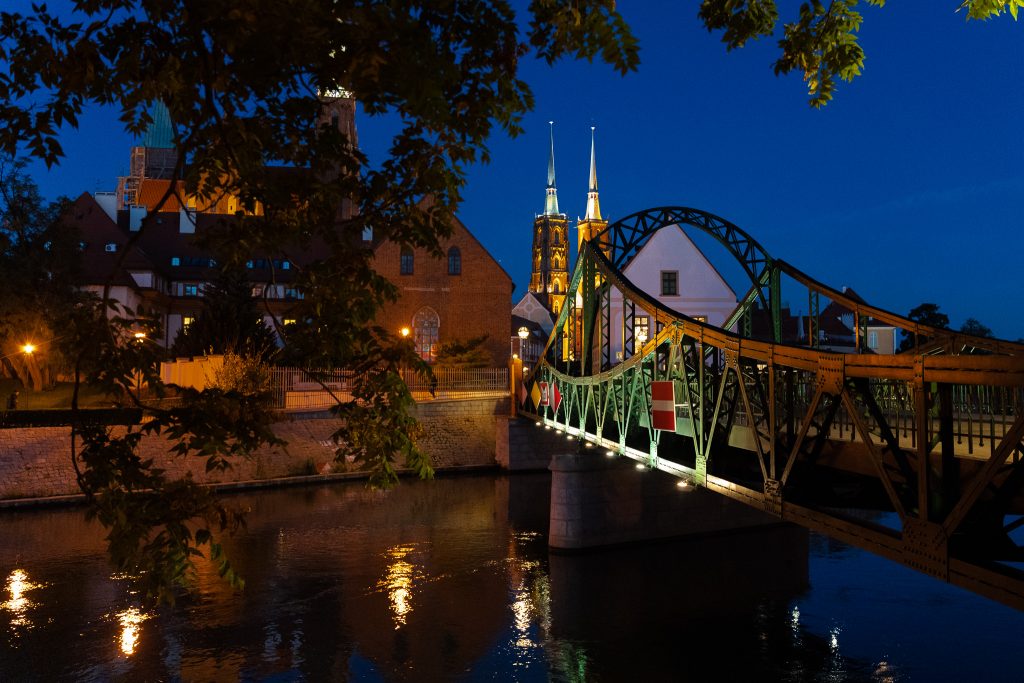

University of Wrocław Botanical Garden
University of Wrocław Botanical Garden (pl. Ogród Botaniczny Uniwersytetu Wrocławskiego) was established for medical students in 1811. It’s the second-oldest botanical garden in Poland because of its area of 7.5ha, and inside you’ll find about 11500 plants from different parts of the world.
The Botanical Garden is open from 1st April to 31st October. Entrance cost: normal – 25zł, reduced – 15zł (May 2023). You can check current prices on the Botanical Garden’s official website. You can also buy tickets online.
Best things to do in Wroclaw near Bulwar Dunikowskiego
Xawery Dunikowski Boulevard
Xawery Dunikowski Boulevard (pl. Bulwar Xawerego Dunikowskiego) is located opposite the Ostrów Tumski. It stretches from Market Hall up to Peace Bridge (pl. Most Pokoju), but you can continue a nice stroll up to the Grunwald Bridge. Bulwar Dunikowskiego is an amazing place for walking, exercising, meeting with friends, or just relaxing by the river with fantastic views. For us, relaxing on the boulevard is one of the best things to do in Wrocław – we love it!
Along the boulevard, you’ll also find marinas with kayaks to rent, and boats in which you can go on a cruise. For the great panoramic views climb a small hill, Bastion Ceglarski, right next to the marina with kayaks – from there you can admire Ostrów Tumski and the crown of the Panorama Racławicka building. Close to the Peace Bridge, you’ll also find unique sculptures created by Polish artist, Magdalena Abakanowicz.
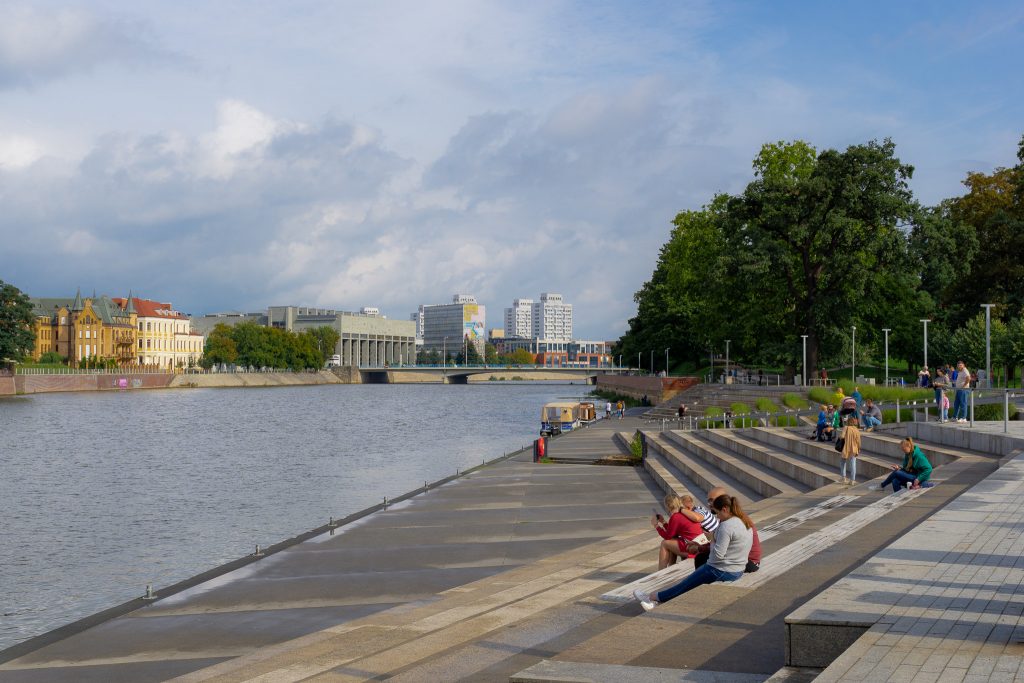
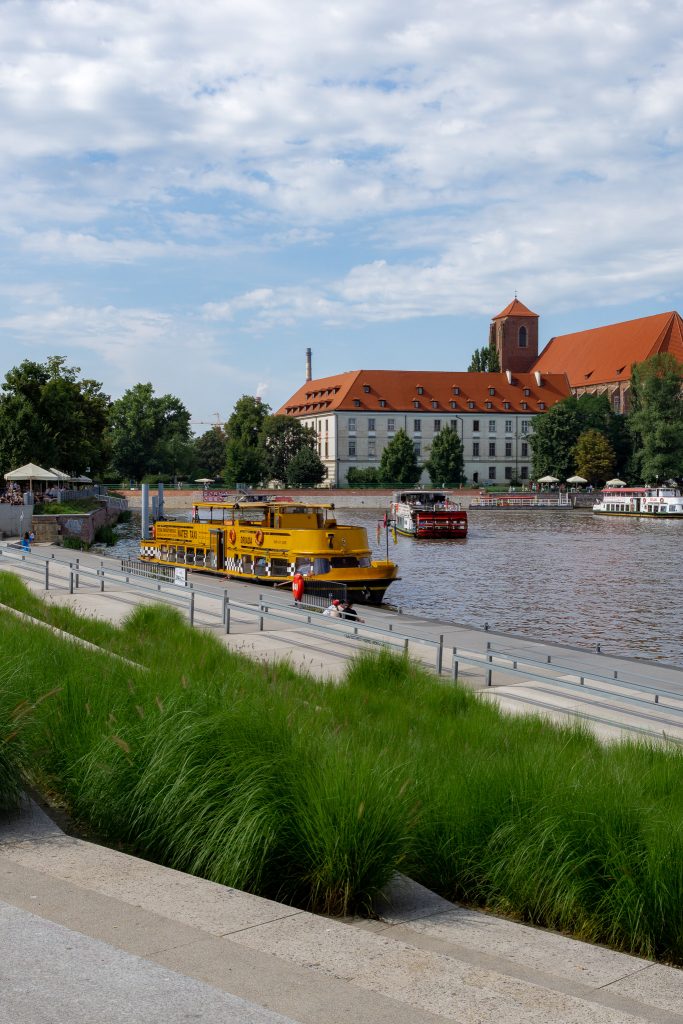
National Museum in Wrocław
National Museum in Wrocław (pl. Muzeum Narodowe we Wrocławiu) is open since 1948. It holds one of the largest collections of art in Poland – more than 200.000 pieces are there! It sits right next to the Panorama Racławicka, in a 19th-century building. Ivy covers big chunk of it which makes it look very spectacular!
Entrance to the National Museum is free on Saturdays and paid on other days. Normal: 25zł, reduced: 20zł (October 2023). You can check current prices on the National Museum’s official website. You can also buy tickets online.
Panorama of the Battle of Racławice
Panorama Racławicka as we call it in Polish is definitely one of the best things to do in Wroclaw. It’s located in a very unique-looking building that resembles a crown. It’s actually a huge (15x114m), 360° degree painting created by Jan Styk (along with some other artists). The most remarkable thing about it is the fact that they finish painting it in… 9 months!
Panorama of the Battle of Racławice was created at the end of the 19th century, to commemorate the 100th anniversary of winning the Battle of Racławice (1794), a battle between Russia and Poland. Until the end of the Second World War, the painting was shown in Lviv, and later it was brought to Wroclaw. But for many years, up until 1985, it wasn’t shown in public as its subject, the fight against the Russians didn’t fit the promoted Polish-Soviet friendship.
The entrance cost: normal – 50zł, reduced – 35zł (October 2023). You can check current prices on the National Museum’s official website. You can also buy tickets online.
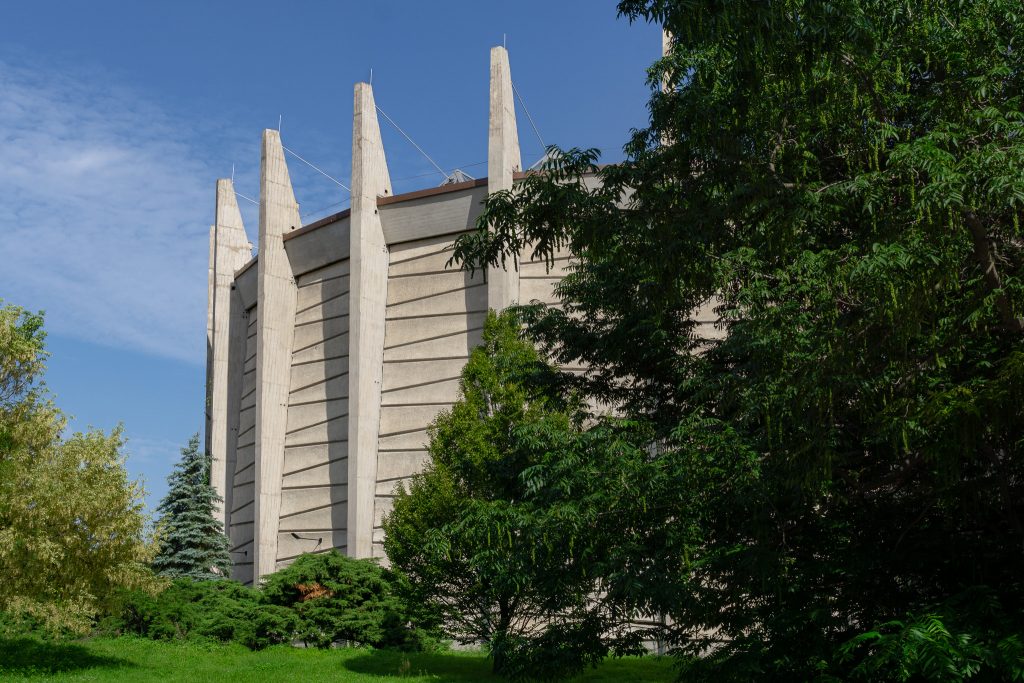
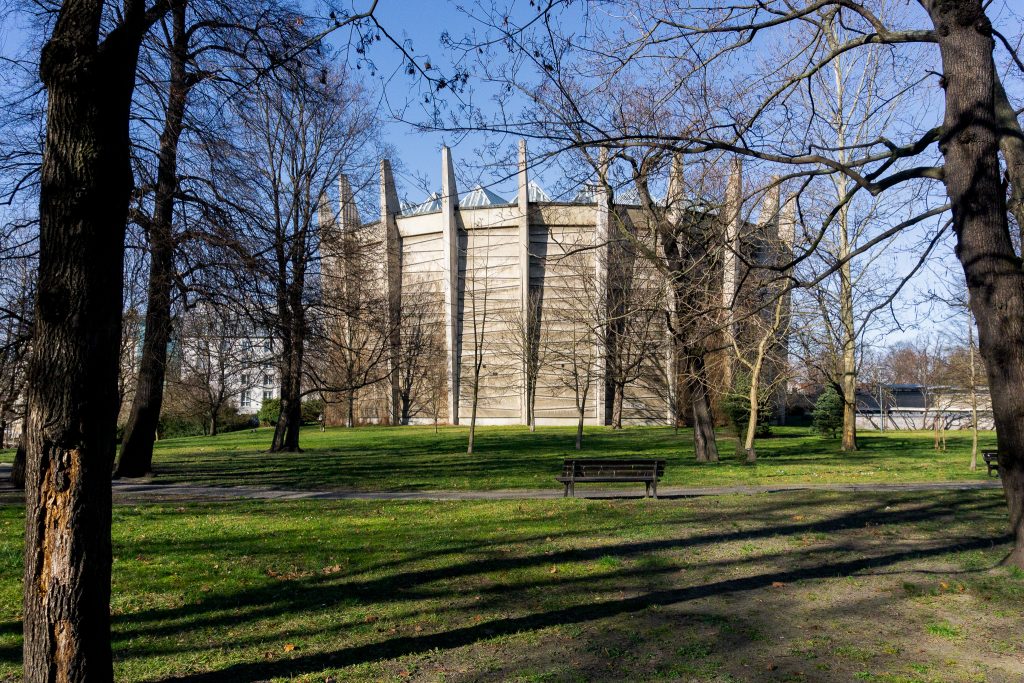
Important note from the Museum website: “A ticket purchased to view the Panorama of the Battle of Racławice also entitles its holder to a free admission to the permanent exhibitions in the National Museum in Wrocław, the Ethnographic Museum, and the Four Domes Pavilion, during the 3 months following the date of viewing the Panorama printed on the ticket.”
Wroclaw’s Manhattan
Staying on the subject of art, and places to visit in Wroclaw near Bulwar Dunikowskiego, we have to mention famous (or sometimes infamous) buildings called Wroclaw’s Manhattan (pl. Wrocławski Manhattan), or even more affectionately: sedesowce (toilet seat apartments should be the good enough translation). The well-known local architect Jadwiga Grabowska-Hawrylak designed the buildings and based on her designs those were built between 1970 and 1973.
What’s the story behind them? Well, ironically those buildings were supposed to bring a bit of Mediterranean vibe to Wrocław, with plants hanging from the facade, rounded windows, white color, and hanging gardens on the terraces. Unfortunately, rounded windows weren’t delivered, the white color was replaced with gray, and gardens were never built either. Because of that, it turned out to be a great example of brutalism architecture. Currently, visiting Manhattan is one of the most unique and unusual things to do in Wrocław, which some love and some hate.

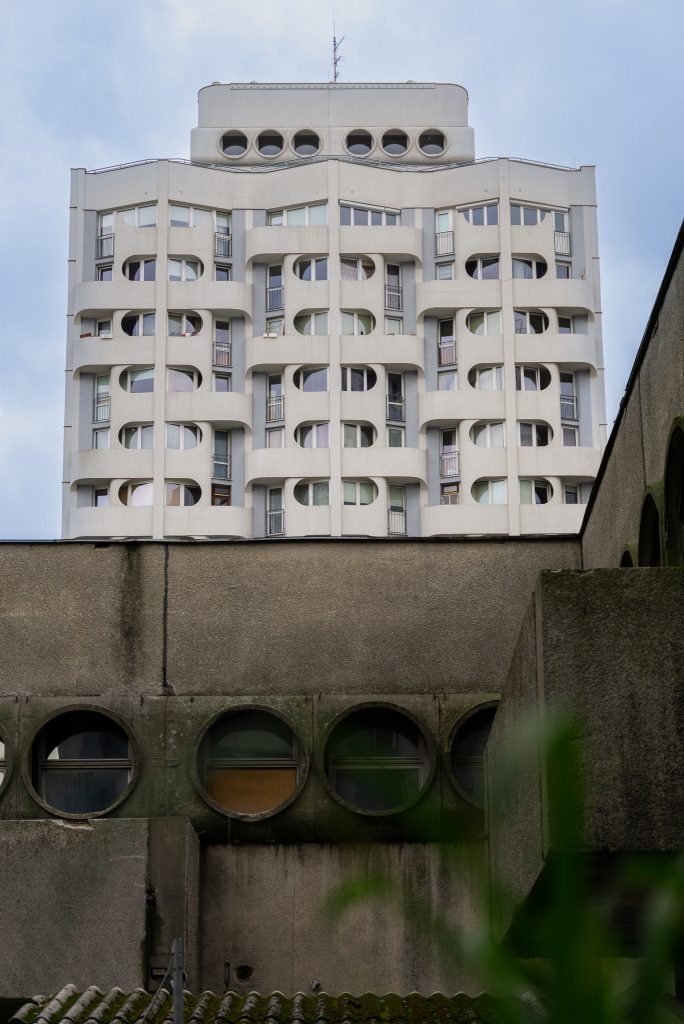
Grunwaldzki Bridge
Grunwaldzki Bridge (pl. Most Grunwaldzki) is the most recognizable suspension bridge in Wrocław. It was built at the beginning of the 20th century, between 1908-1910. From the bridge, you can admire amazing views over places like Ostrów Tumski, or Wroclaw’s Manhattan.


Market Hall
Wroclaw Market Hall (pl. Hala Targowa) is one of the biggest produce markets in Wrocław. It’s located at the beginning of Bulwar Dunikowskiego, right next to the Sand Bridge, in a building built at the beginning of the 20th century. Today, on the two floors, dozens of sellers offer a wide variety of products from Poland and all over the world. While outside, don’t forget to take a look at its clock tower. It’s definitely a place that you can’t miss while in Wrocław.
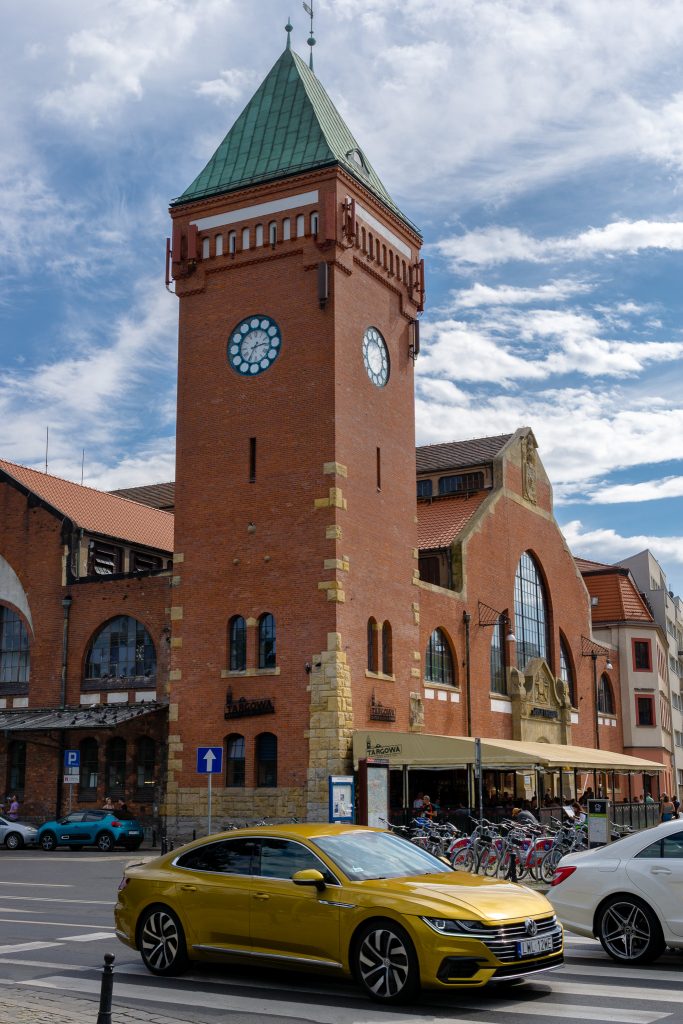
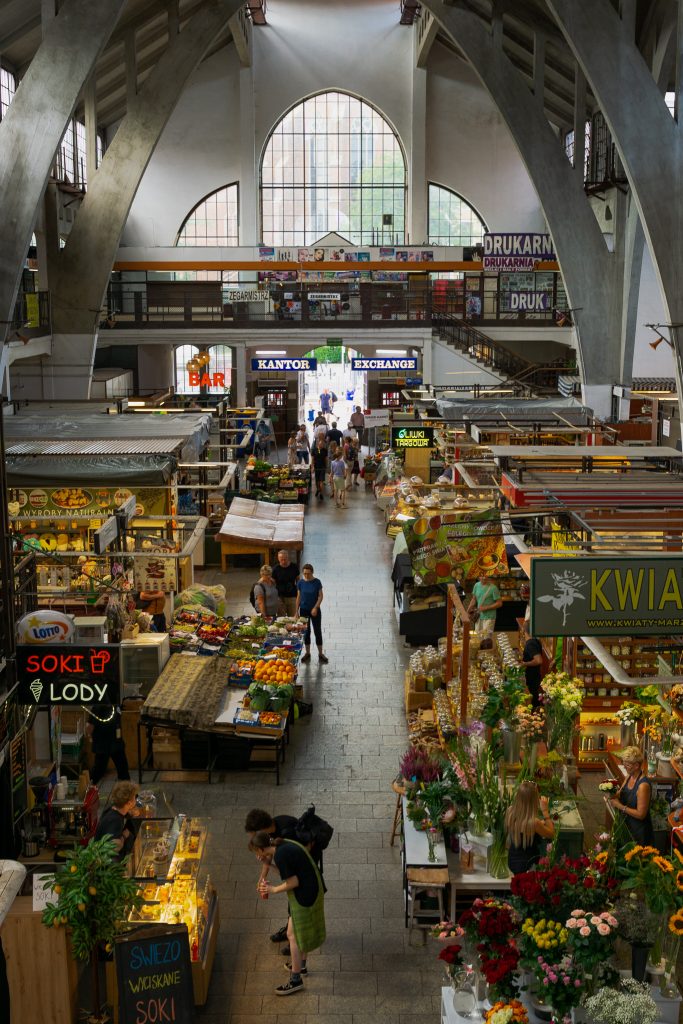
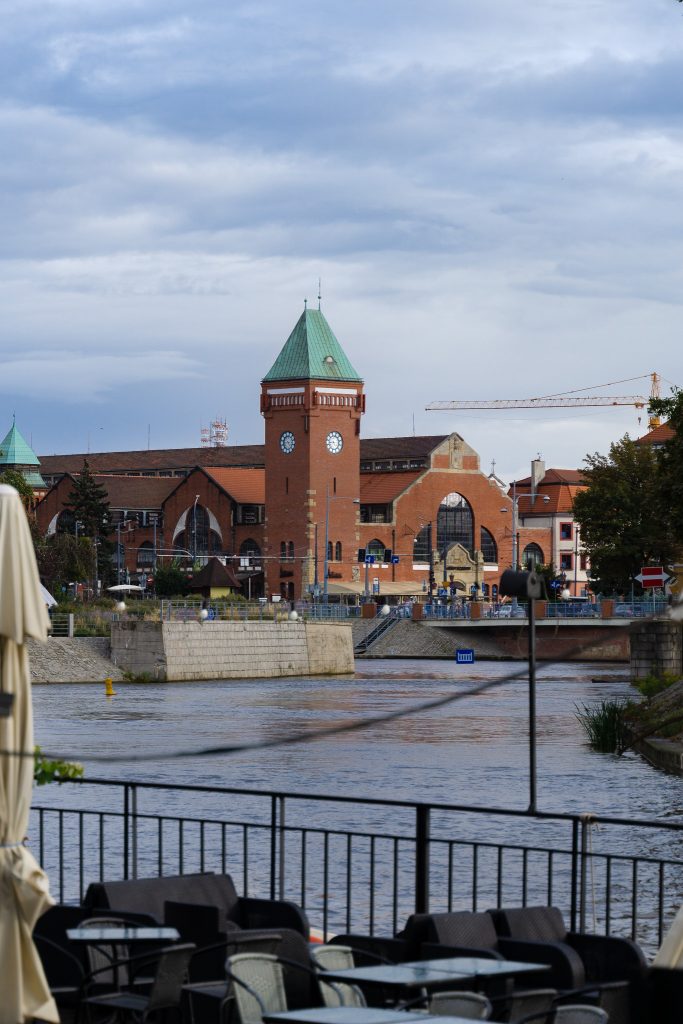
Best things to in Wroclaw near Centennial Hall
Wrocław Centennial Hall
Centennial Hall (pl. Hala Stulecia) is one of the most famous Wrocław landmarks. It was designed by the architect Max Berg and built between 1911-1913 when the city was part of the German Empire. Since the beginning, Centennial Hall serves as a multi-purpose building where many concerts, performances, exhibitions, cultural events, and business summits take place. In front of Centennial Hall, you’ll find a needle-like sculpture called Iglica, set up in 1948.
Centennial Hall became one of Poland’s official national Historic Monuments in 2005 and one year later a UNESCO World Heritage Site. Centennial Hall is one of the most impressive concrete structures in the world. To visit the Centennial Hall center you have to take part in one of the events held there.

Pergola and Multimedia Fountain
Things that you can’t miss while in Wrocław and Centennial Hall surroundings are a lovely stroll around Pergola and watching a multimedia fountain show. Pergola is a place that was created just for walking and relaxing. It’s a 640m long path among two rows of 750 concrete poles crowned with a grating overgrown with vines.
In the center Pergola features a huge multimedia fountain that offers seasonal, spectacular shows synchronized to music and lights. It’s the largest fountain of that type in Poland, and one of the largest in Europe. Shows take place every day from May to October, and they vary in length and played type of music (there are shows with classical, pop, and modern music). On the pik.wroclaw website you can check the repertoire.
Daytime shows are presented every full hour from 10AM-5PM, while evening shows take place every full hour from 6PM-8 or 9PM. Night shows are particularly dazzling as then animations, photos and films are projected on water. The fountain shows are free to watch.
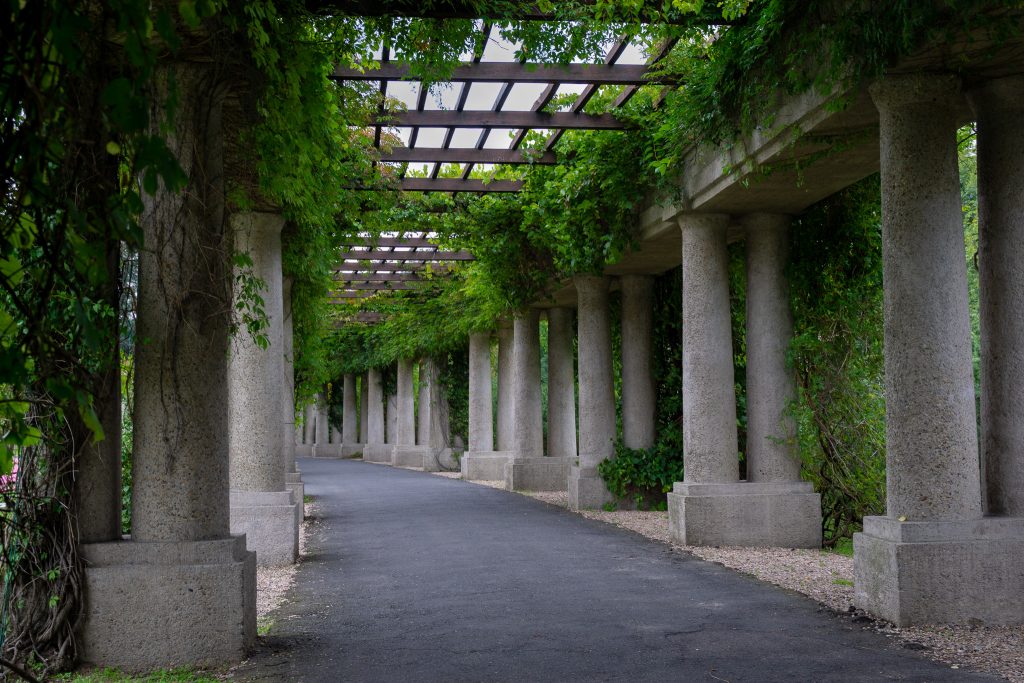
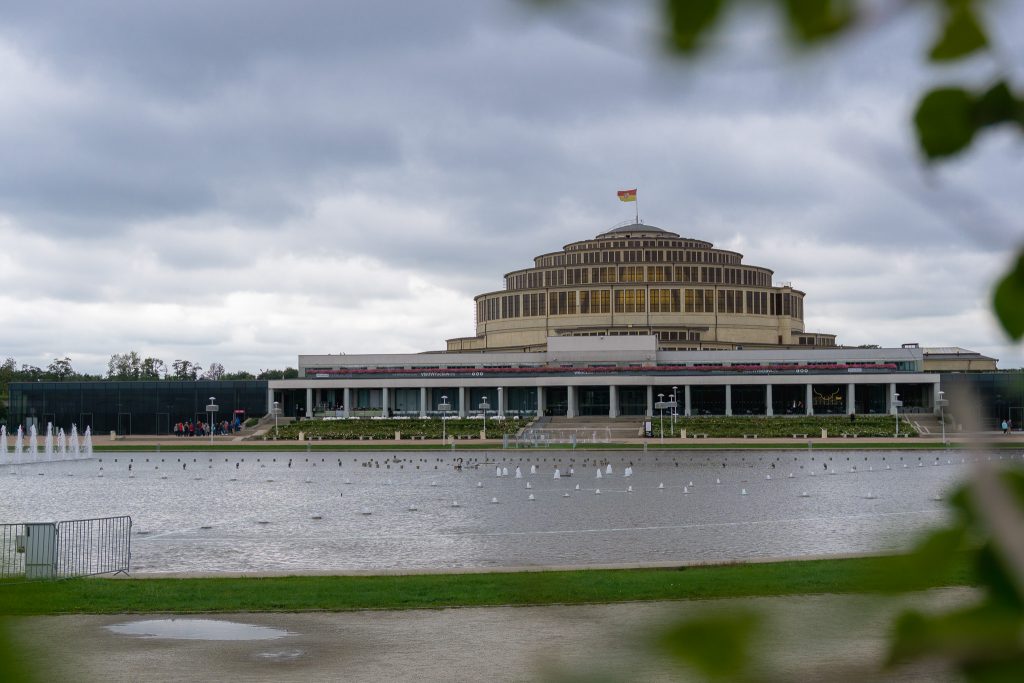
Also, check out this video to see how spectacular the Wrocław Multimedia Fountain show is:
Japanese Garden
Japanese Garden (pl. Ogród Japoński) is another beautiful place near Centennial Hall, a real gem for lovers of plants and walks in green areas. The garden is part of a bigger green area in the city – Szczytnicki Park (pl. Park Szczytnicki). Its first version was created in 1913 by Japanese gardener Mankichi Arai for the Centennial Exhibition event, as a part of the Garden Art Exhibition. After the exhibition, the garden was dismantled into pieces, but many of the original plants, the pond, and the layout of the alleys have been preserved.
Many years later, in the 1990s, the idea of revitalizing the Japanese Garden came up. Works were carried out with the participation of specialists from Japan and finished in 1997. Unfortunately 2 months after reconstruction most of the garden was destroyed during the Millennium Flood (yes, one that the High Water Netflix series is about). Finally, in 1999 the Japanese Garden opened again and works until this day.
The Japanese Garden is open from April to the end of October. The entrance cost: normal – 21zł, reduced – 14zł (May 2023). To check current prices visit visitwroclaw.eu website.
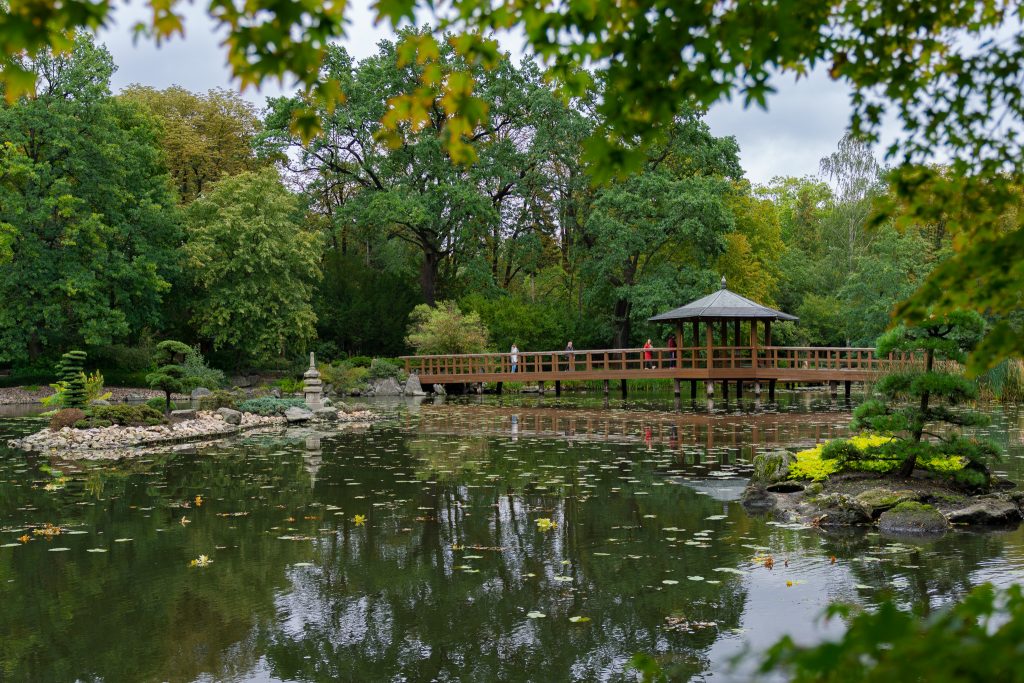
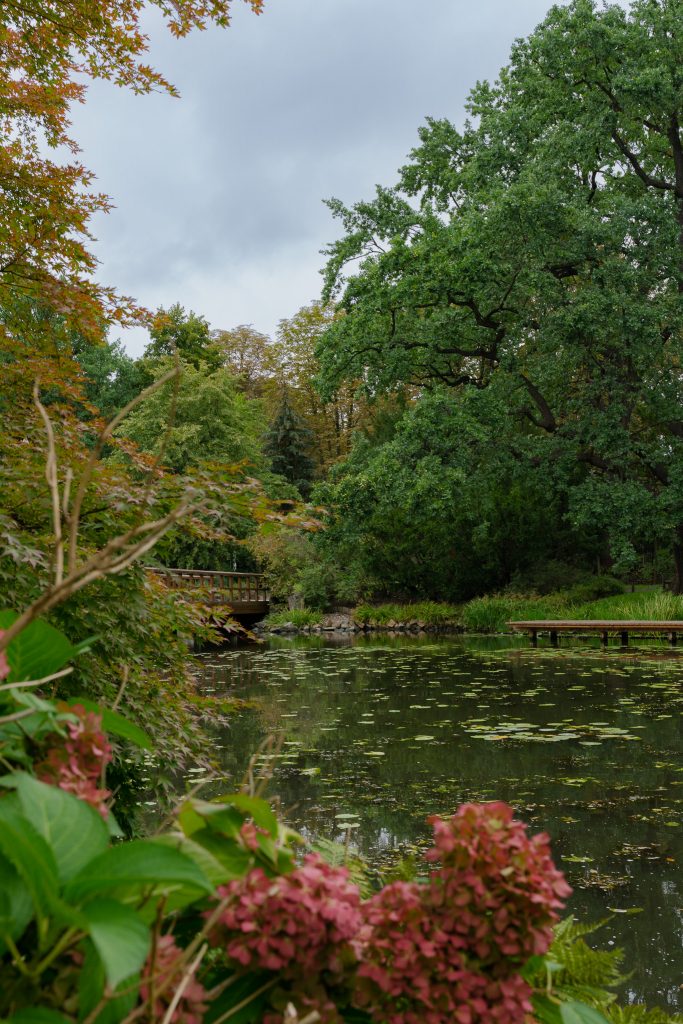
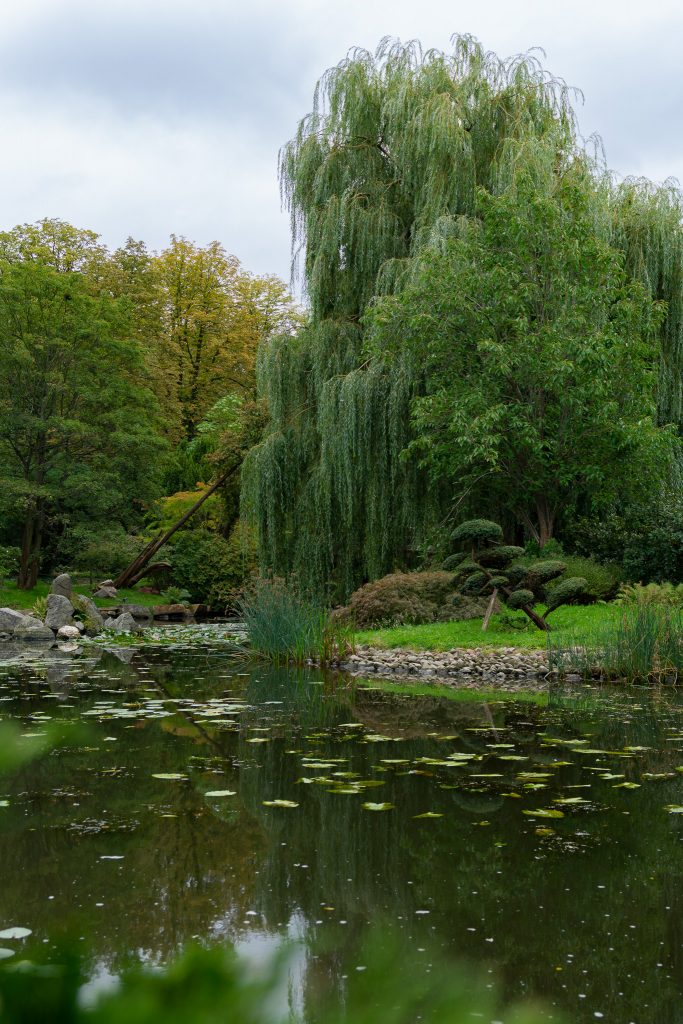
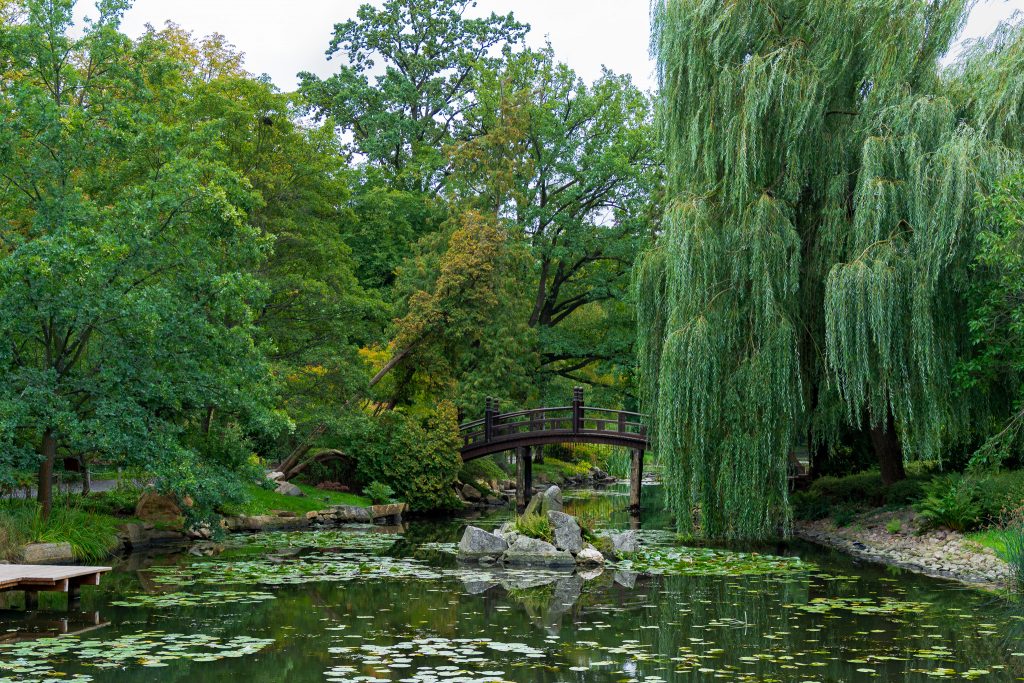
WuWa district
Once near Centennial Hall, you can take a short walk to the WuWa district. WuWa comes from the German Wohnungs- und Werkraumausstellung which means Workplace and House Exhibition. It was created in 1929 for the exhibition held in Breslau, to show and test minimalist and cheap living arrangements. It took only three months to build all 32 buildings together with recreational areas!
Wroclaw Zoo and Afrykarium
Among all the things to do in Wroclaw, we won’t encourage you to visit this one as we don’t want to encourage something which goes against our beliefs. We’ll just leave a short note with all the necessary information and you’ll decide for yourself if you want to visit.
Wroclaw Zoo and Afrykarium (pl. Wrocławskie Zoo i Afrykarium) is open since 1865 which makes it the oldest zoo in Poland. Inside 33ha you’ll find over 1000 species. Entrance to the Zoo and Afrykarium cost: normal – 60zł, reduced – 50zł. You can buy tickets online on bilety.zoo.wroclaw.pl or at the ticket offices/ticket machines on the day of your visit.
Best things to do near Wrocław Główny train station
Wrocław Główny train station
Wrocław Główny train station (pl. Dworzec Główny PKP Wrocław) is the biggest and most important train station in the city. It’s located in a castle-looking building from the middle of the 19th century (1857). In our opinion, it’s one of the most beautiful train stations in Poland. We highly recommend seeing it not only from the outside but also from the inside. Also, use the escalators and see the main hall of the train station from the upper floor.
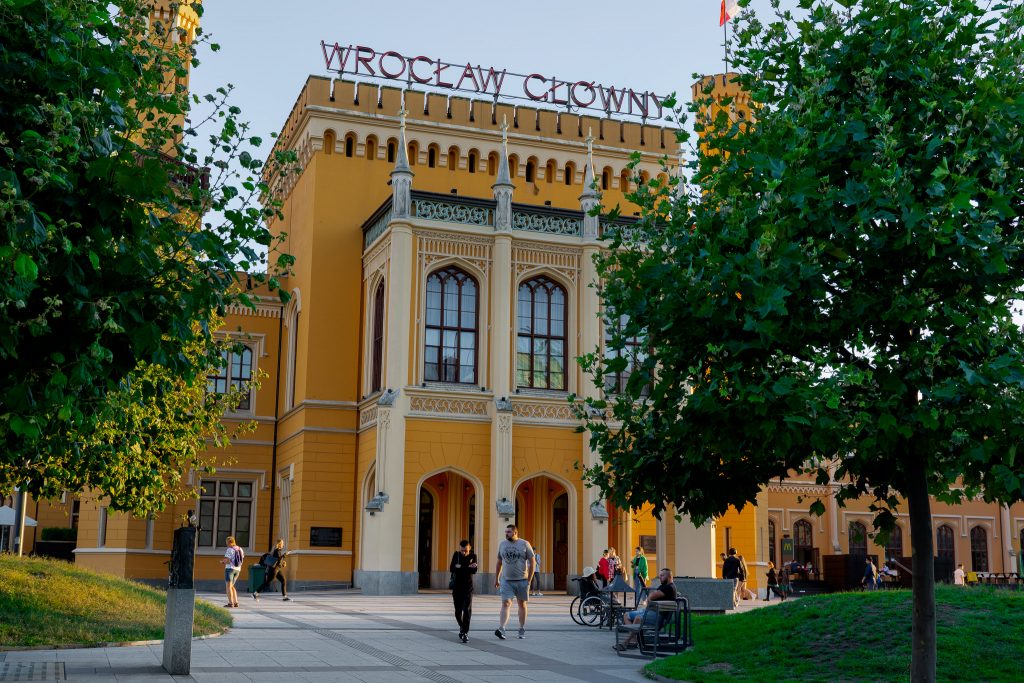

Mezonetowiec and Trzonolinowiec buildings
Seeing the Mezonetowiec and Trzonolinowiec buildings is an unusual and unique thing to do while in Wrocław. Both of them are located in very close proximity to the train station, no more than 5 minutes walk.
Mezonetowiec
Mezonetowiec is a building from 1960, designed by famous local architect, Jadwiga Grabowska-Hawrylak (yes, the same one who designed Sedesowce). Why is this place interesting? At first glance, it looks like a common block, but after a closer look, you’ll notice that there are two-level apartments there. The lower level is occupied by a living room and a kitchen, and the upper level houses a bedroom and a toilet. Mezonetowiec was the first residential building in Poland with two-levels apartments.
Trzonolinowiec
Trzonolinowiec is a quite weird-looking building in Wrocław city center. Its first version was built in 1967, and its construction was an attraction in itself. You see, its construction began from… the top floor. We won’t be rewriting here the whole complicated building process but will leave a link where you can read it by yourself. Here you can even watch a short video from the 60s showcasing the building.
In 1974, after the reports of the residents that the building was wobbling during strong winds, Trzonolinowiec was rebuilt. They stiffened the structure and supported it more on the ground level. Currently, the building is often called “domek na kurzej nóżce” which can be translated to a house on a chicken leg.
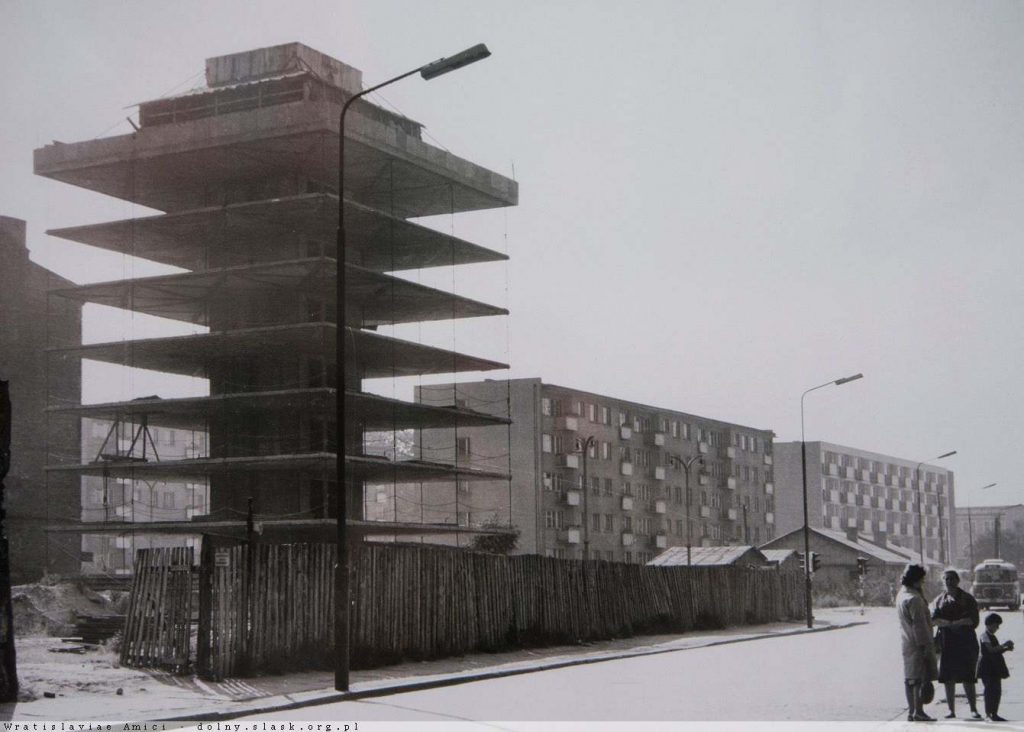
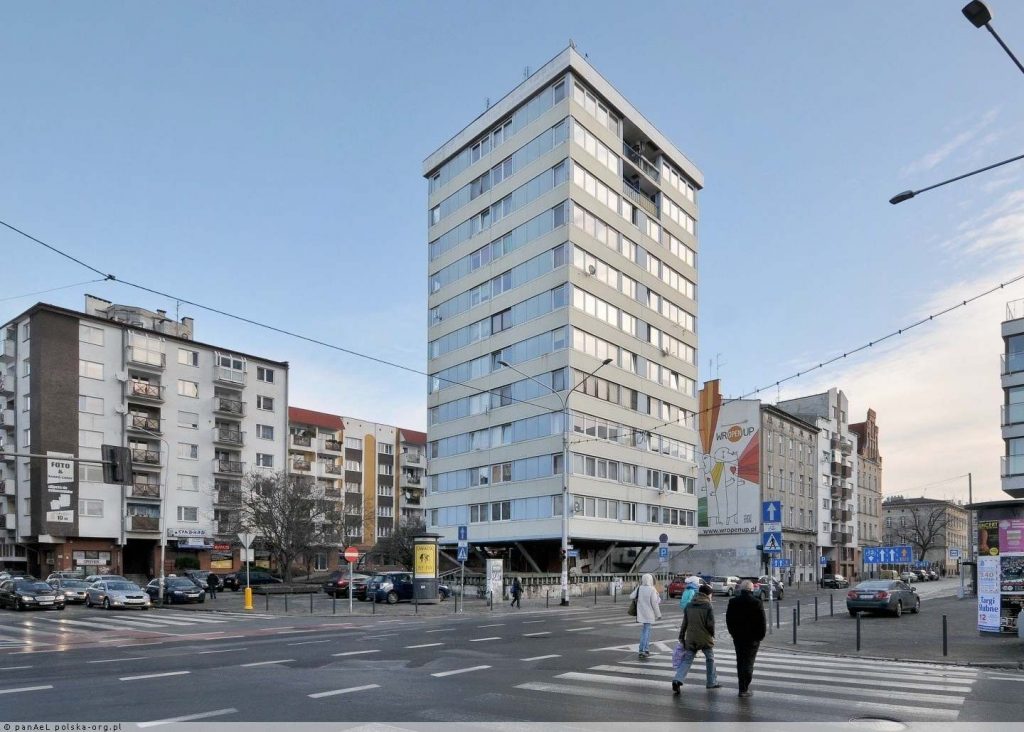
Best things to do in Wroclaw near Sky Tower
Wrocław Sky Tower Skyscraper
Sky Tower with a height of 212m is the tallest building in Wrocław, and the 4th tallest in Poland (as of December 2022). Its construction finished in 2012 and currently serves as a residential, business, commercial, and recreation complex. Take a good look at the shape of the building as for many it’s quite interesting and peculiar – many swear that they see a phallus there! 😲
On the 49th Sky Tower floor, there is a viewpoint that offers amazing views over the whole city. The entrance to the Sky Tower viewpoint cost: normal – 25zł, reduced – 20zł (October 2023). You can buy tickets online on bilety.skytower website, or in the ticket office on the ground floor.
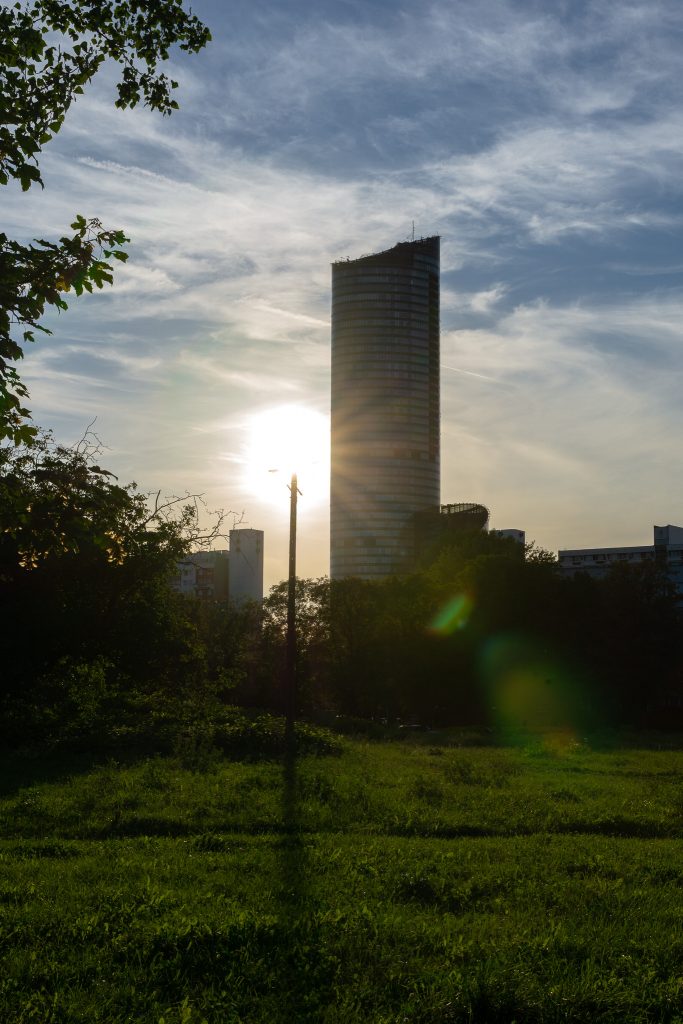

Kolejkowo Wrocław
Inside Sky Tower, you’ll find Kolejkowo – one of the most popular attractions in the city, loved by both kids and adults. It’s a large venue with mock-ups featuring a range of detailed miniature worlds with model trains and Wroclaw landmarks. The level of the figures’ detail is truly amazing. In this YouTube video, you can see what it looks like.
Entrance to Kolejkowo cost: normal – 39zł, reduced – 32zł (October 2023). You can buy online on bilety.kolejkowo website, or in the ticket office before the entrance.
Monument of an Anonymous Passerby
Heading from the Sky Tower towards the Market Square you’ll come across very interesting sculptures called Monument of an Anonymous Passerby (pl. Pomnik Anonimowego Przechodnia). It’s the series of bronze figurines looking as if they disappear into the pavement on one side of the road intersection, and reappear on the opposite one. Many say that it’s the metaphor of people going underground in 1981 due to martial law, and getting out of it in 1983 when it ended.
Sculptures were created by Jerzy Kalina and unveiled on 12/13 December 2005, on the same date that 24 years earlier martial law was introduced throughout Poland. The Monument of an Anonymous Passerby is one of the most interesting monuments in the world.
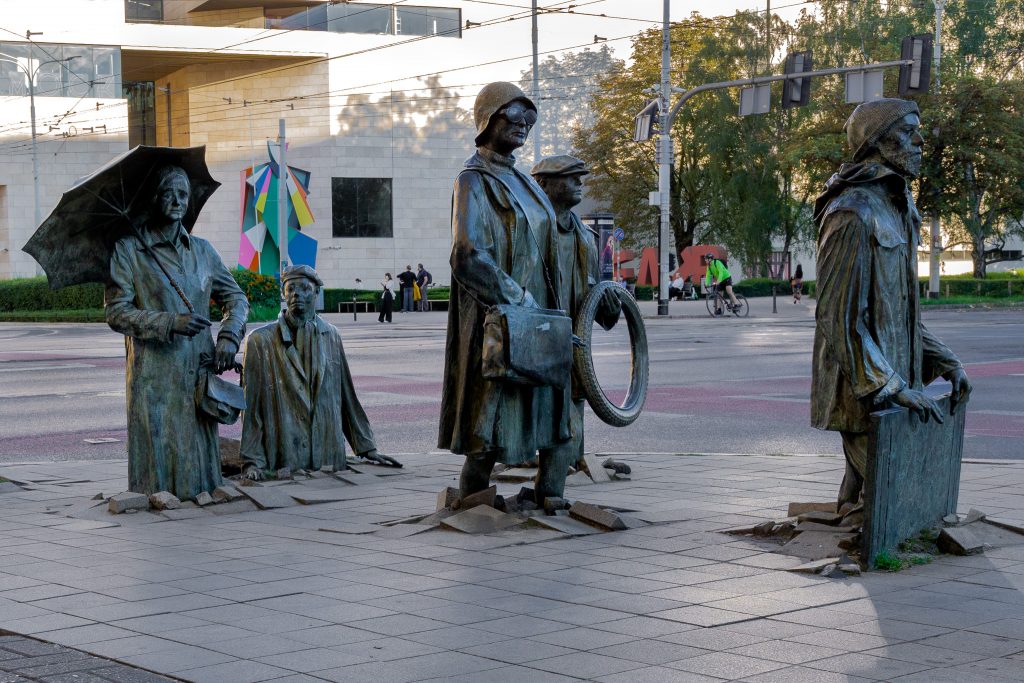
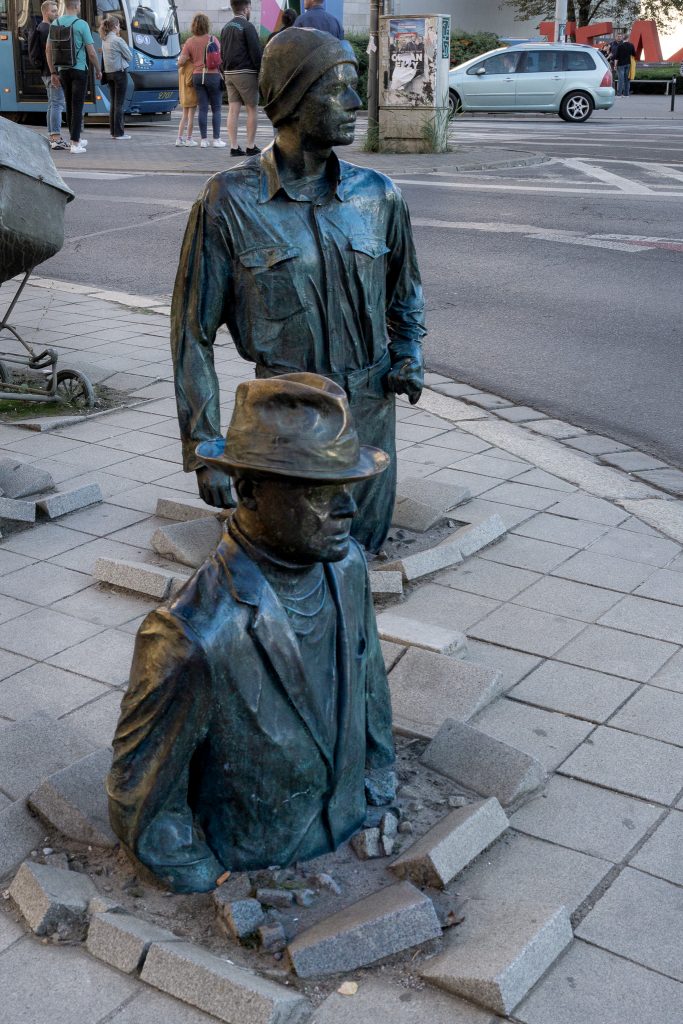
Musical Theatre Capitol and Arlekin sculpture
Across the street, opposite the Monument of an Anonymous Passerby is the Capitol Theater. Nothing too special here, but it’s worth taking a look at the theater building as well as at the colorful jester sculpture called Arlecchino (pl. Arlekin) created by Italian artist Alessandro Mendini.
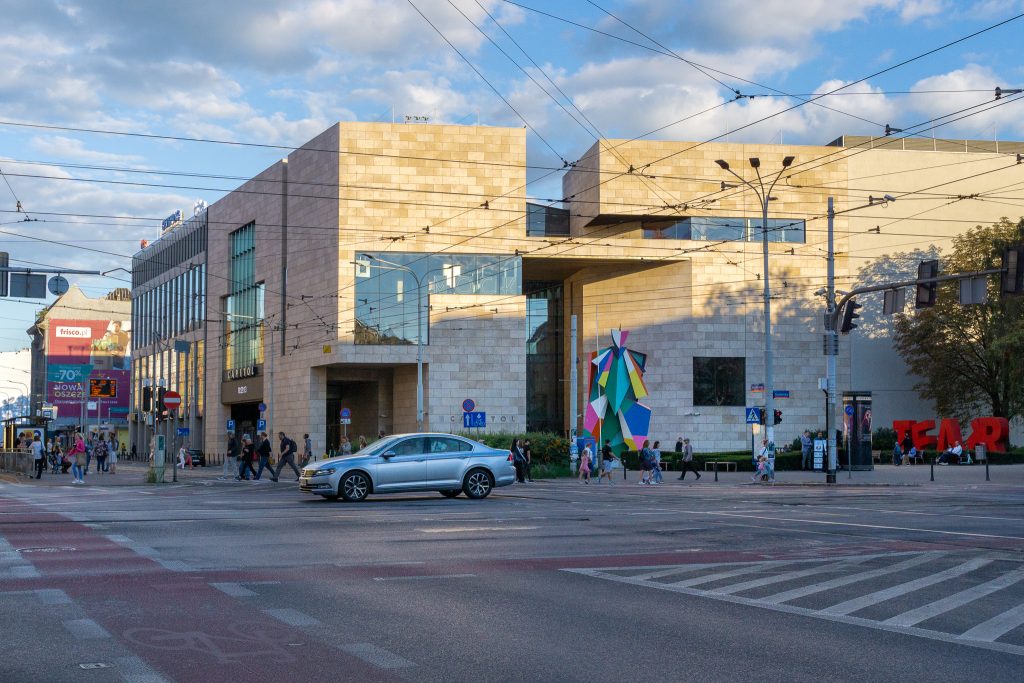

Old Jewish Cemetery
Old Jewish Cemetery (pl. Stary Cmentarz Żydowski) is a historic necropolis-museum, founded in 1856, where burials took place until 1942. It features a large complex of tombs, sculptures, and small grave architecture – there are about 12.000 tombstones on 5ha. Many distinguished Wrocław residents lie here, such as doctors, artists, politicians, and scientists. During World War II, the cemetery became an area of military operations, and traces of those events are still visible on some tombstones.
During your visit pay attention to the symbolism on the tombstones. For example, you’ll find hands on the tombstone of a person who was a descendant of Aaron, a helmet on an army officer, or a broken tree/flower on a tombstone of a person who died suddenly.
Old Jewish Cemetery is located about 15min walk from Sky Tower. Entrance to the Old Jewish Cemetery cost: normal – 15zł, reduced – 10zł (October 2023). The entrance is free on Thursdays. For current prices and opening hours visit visitwroclaw.eu website.
Go off the beaten track – discover less touristy Wrocław districts & hidden gems
If you want to discover less touristy areas of Wrocław and see where ordinary life takes place, check out those city districts located in close proximity to the Old Town:
- Przedmieście Oławskie
- Przedmieście Świdnickie
- Nadodrze
- Krzyki
- Ołbin
- Grabiszyn
Get lost among their streets and maybe you’ll discover some unique places and hidden gems. Here are some of them.
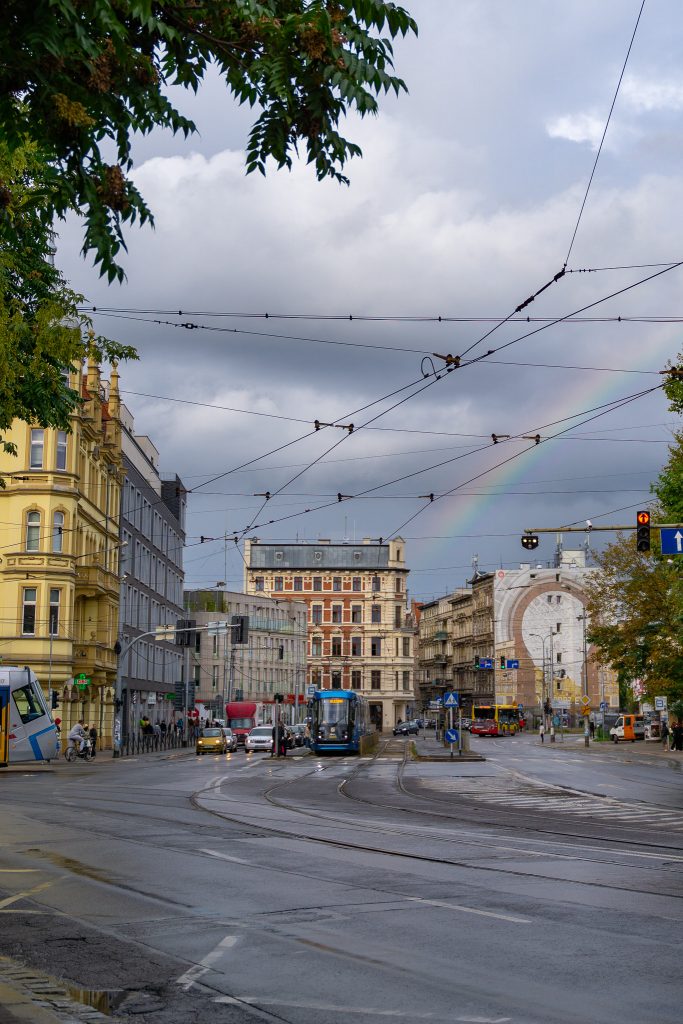
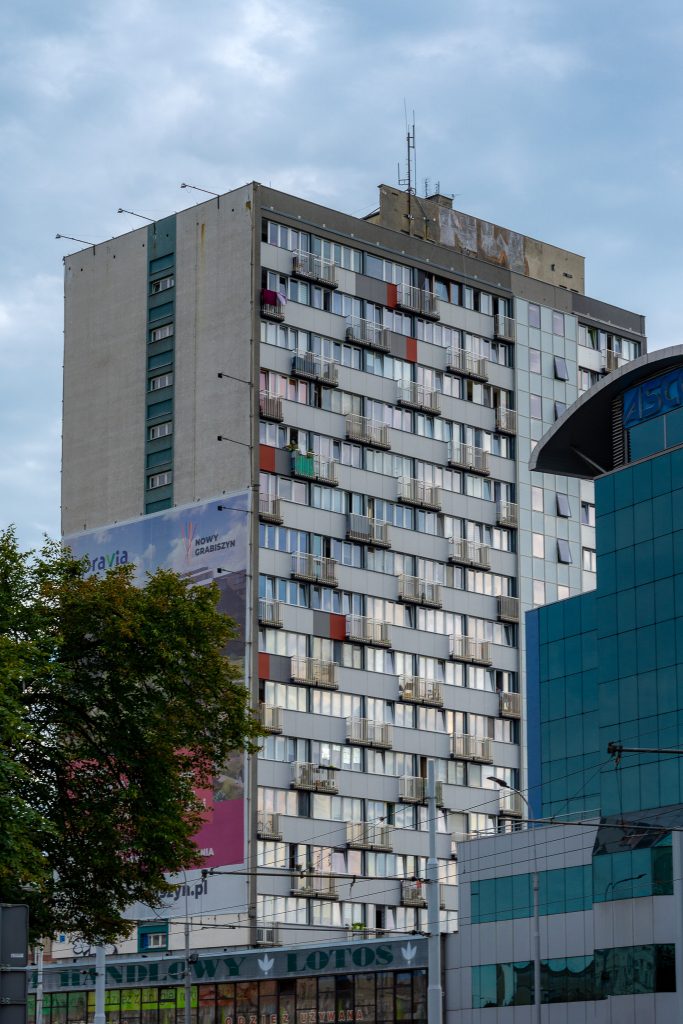
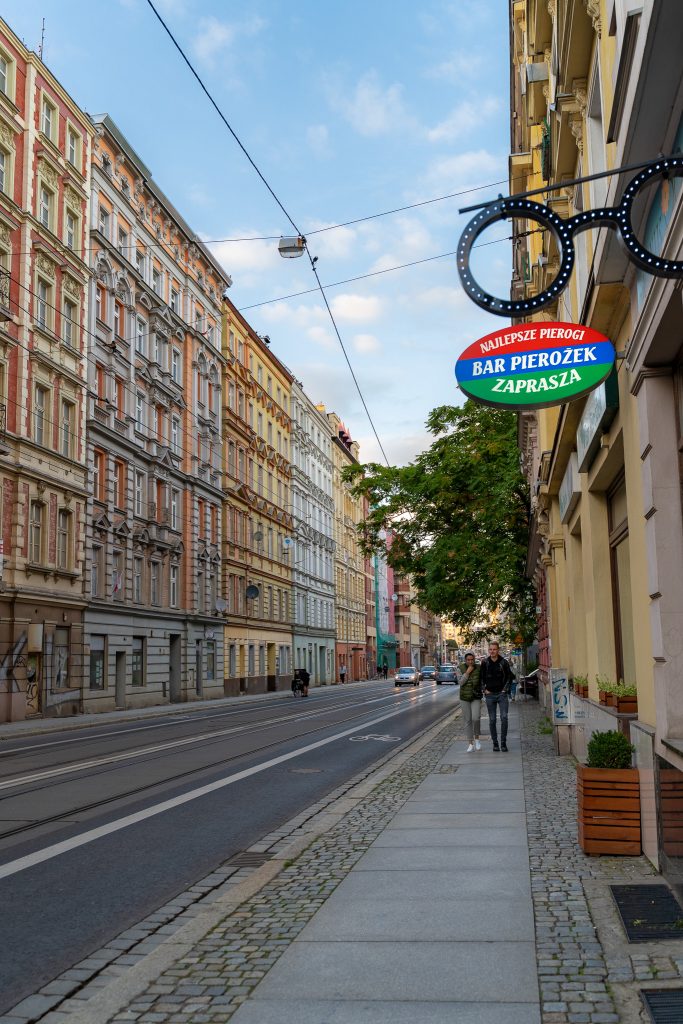
Colorful Backyards on Nadodrze
There is one place in the Nadodrze district that you shouldn’t miss while in Wrocław – Colorful Backyards on Nadodrze (pl. Kolorowe Podwórka na Nadodrzu). As the name already suggests it’s a colorful place, a backyard, full of various street art. Artists used free and blank spaces on the buildings to create spectacular paintings, murals, sculptures, and even installations with the use of everyday items. It’s a well-hidden thing to do in Wrocław, so be sure not to miss it.
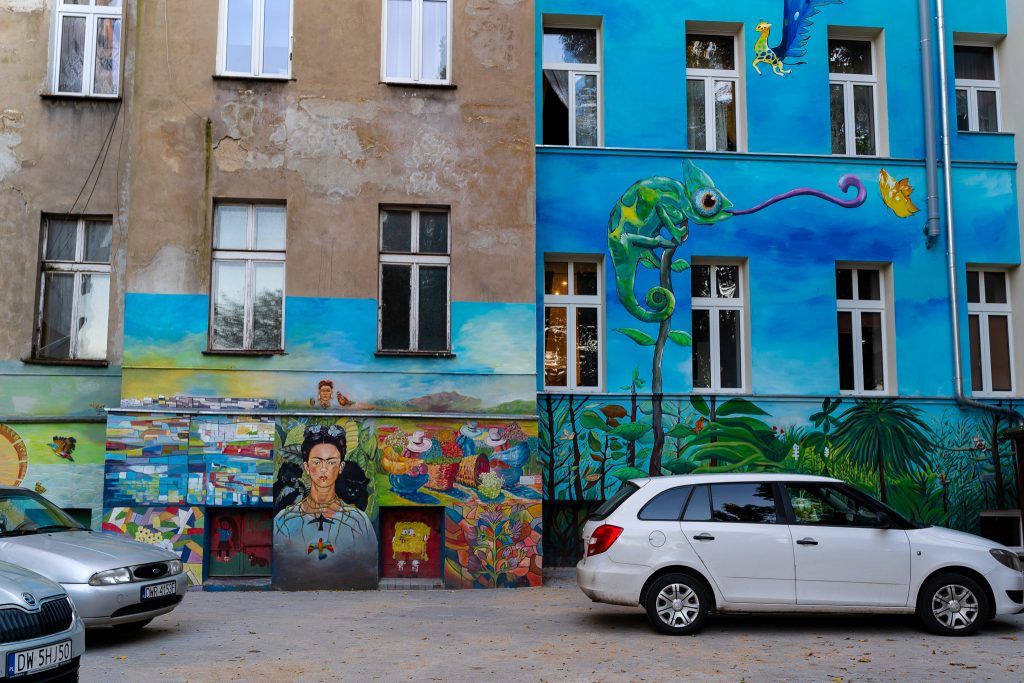
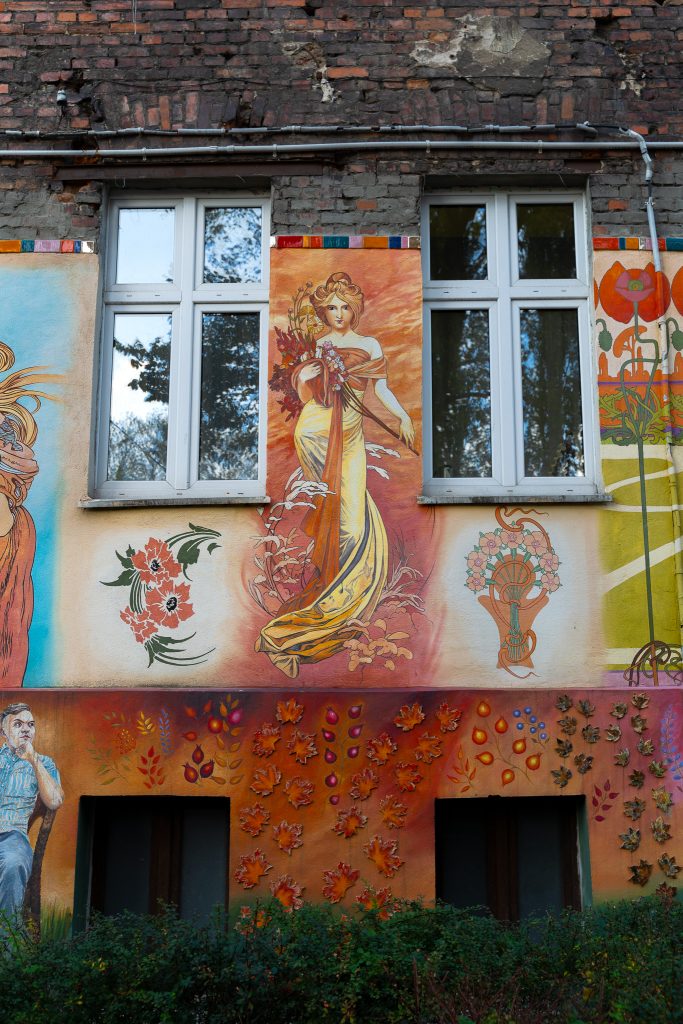
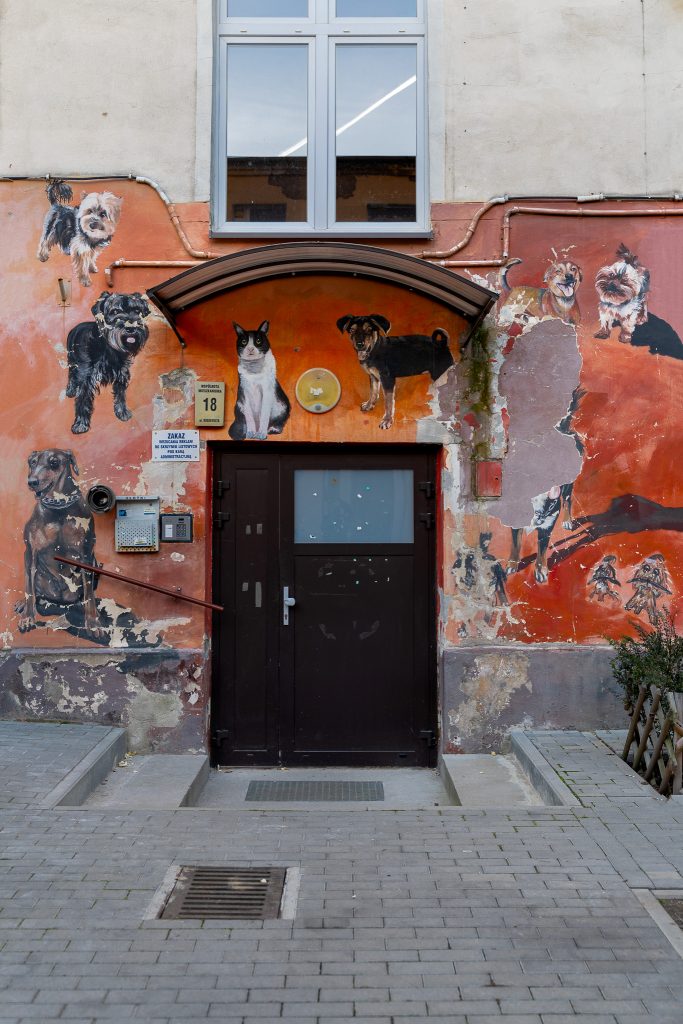
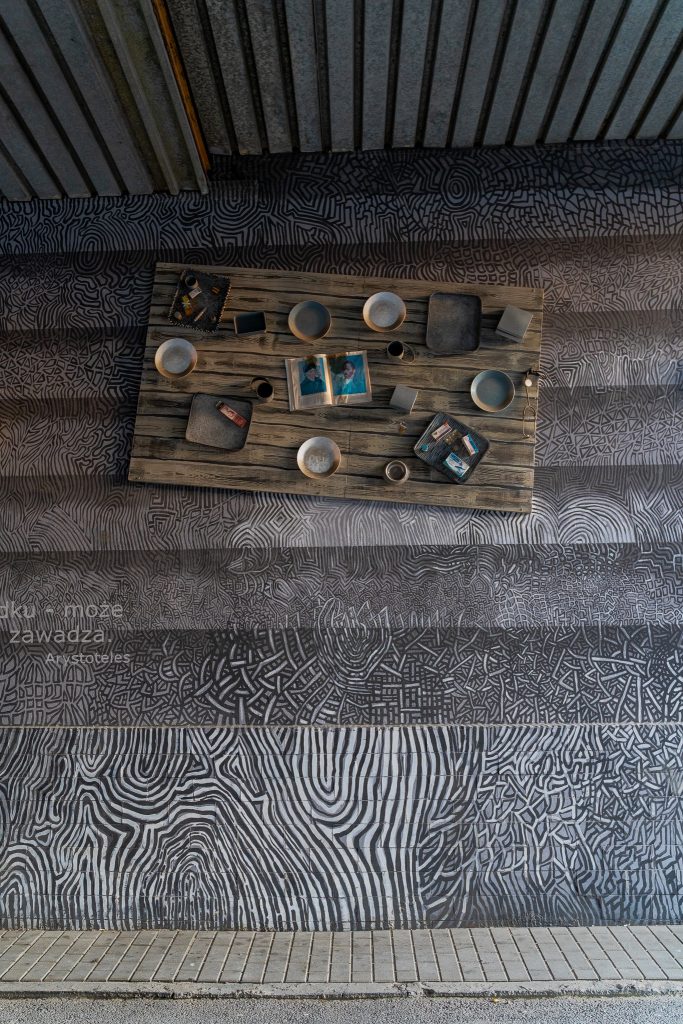
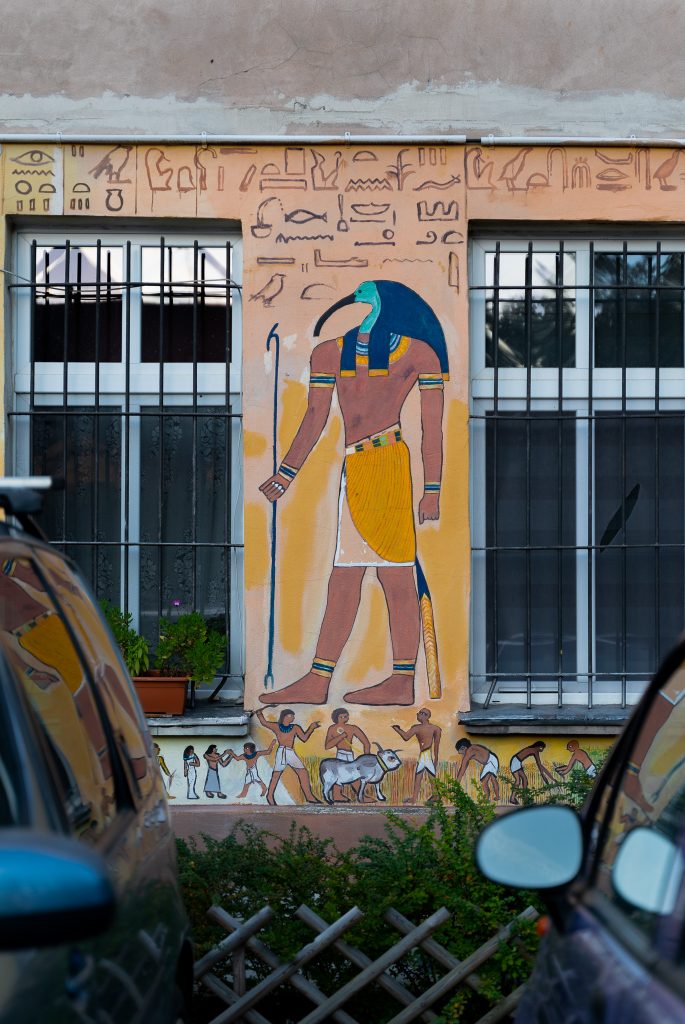
Hydropolis
Hydropolis, or rather Hydropolis Centre for Ecological Education (pl. Centrum Edukacji Ekologicznej Hydropolis), is an interactive museum/science where water and the environment play the main part. Inside you’ll learn about the things like the role and importance of water, the physics behind water’s various states, and you’ll see a water printer and many interesting models and replicas, of course, all connected to the water. In our opinion, it’s a place worth visiting.
Hydropolis is located on the outskirts of the Przedmieście Oławskie, about a 20min walk from Wrocław Główny train station, or 30min from Wrocław Main Square. Entrance to the Hydropolis cost: normal – 38zł, reduced – 29zł (May 2023). You can buy tickets online on hydropolis.pl official website, as well as at the ticket office on the site.
Here you can take a look at a short video presenting Hydropolis:
Polinka Cable Car
Polinka Cable Car (pl. Kolejka linowa Polinka ) is located right next to Hydropolis. Polinka is the cable car belonging to Wrocław University of Science and Technology, linking two campuses separated by the Oder River.
If you want, you can take a short ride by Polinka. You can buy tickets in ticket machines at prices: normal – 4.6zł, reduced – 2.3zł. Polinka is closed on weekends and holidays.
Wrocław Hogwarts – Building of the Faculty of Architecture of the Wrocław University of Technology
One of the most unique and unusual things to do in Wroclaw is visiting the building of the Faculty of Architecture of the Wrocław University of Technology, commonly called Wrocław Hogwarts. To be honest we found out about it only during the research for this post. But we already added it to our list and will go and see it during our next visit to Wrocław. The building is located in the Ołbin district, about 35min by foot from the main square. You cannot go inside to visit it but taking a look from the outside should do it.
Depot History Centre in Wrocław
Depot History Centre in Wrocław (pl. Centrum Historii Zajezdnia) is located in the building of the old bus hall on Grabiszynska Street. It’s a place of modern historical exhibitions and educational projects about the history of post-war Lower Silesia and Wrocław. The main exhibition is “Wrocław 1945–2016” and shows the stages of the city’s revival after the war. In modern history, Wrocław is the largest European city whose population has been almost completely replaced. Reminder – Wrocław became a part of Poland again only in 1945, after 610 years of being part of various other countries).
The exhibitions at the museum consist of thousands of photos, films, and multimedia presentations. Entrance to the Depot History Centre in Wrocław cost: normal – 16zł, reduced – 8zł (October 2023). For current prices and opening hours visit visitwroclaw.eu website.
Other great things to do in Wroclaw, Poland
Best shopping places to visit in Wroclaw
Wrocław boasts a large number of shopping malls. Close to the city center you can find: Wroclavia (our favorite), Renoma, Galeria Dominikańska, Pasaż Grunwaldzki, and a shopping mall in Sky Tower. Little further are: Magnolia, Korona, and Bielany Wrocławskie.
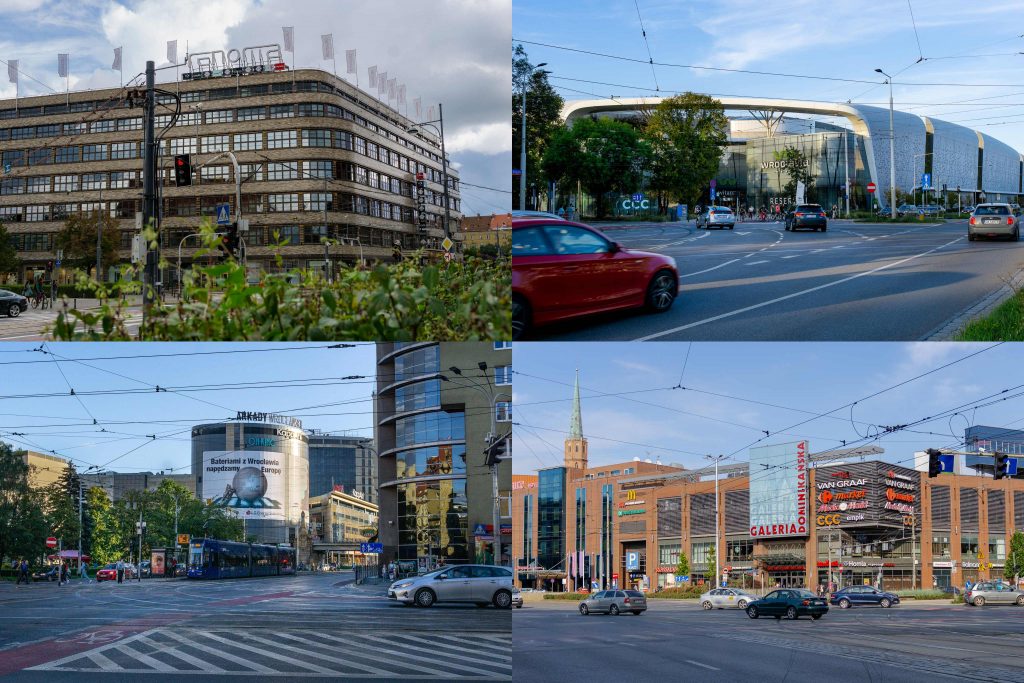
Go to see a movie in the cinema
In Wrocław you’ll find a few cinema operators: Cinema City, Multikino, Oh Kino, Helios, and DCF kino. Our personal recommendation is to visit Cinema City in the Wroclavia shopping mall.
Relax in one of Wrocław parks
Wrocław also boasts a great number of green spaces. We visited many of them, and here are some of our favorites: Park Wschodni, Park Grabiszyński, Park Szczytnicki, Park Zachodni, Las Osobowicki, and Park Południowy.
Go swim in Wrocław Aquapark
In the Wrocław center, just a few steps from Main Train Station, you’ll find an aquapark. Inside there are slides, leisure and sport pools, as well as a wellness zone with saunas and steam rooms. For more information please visit Aquapark’s official website.
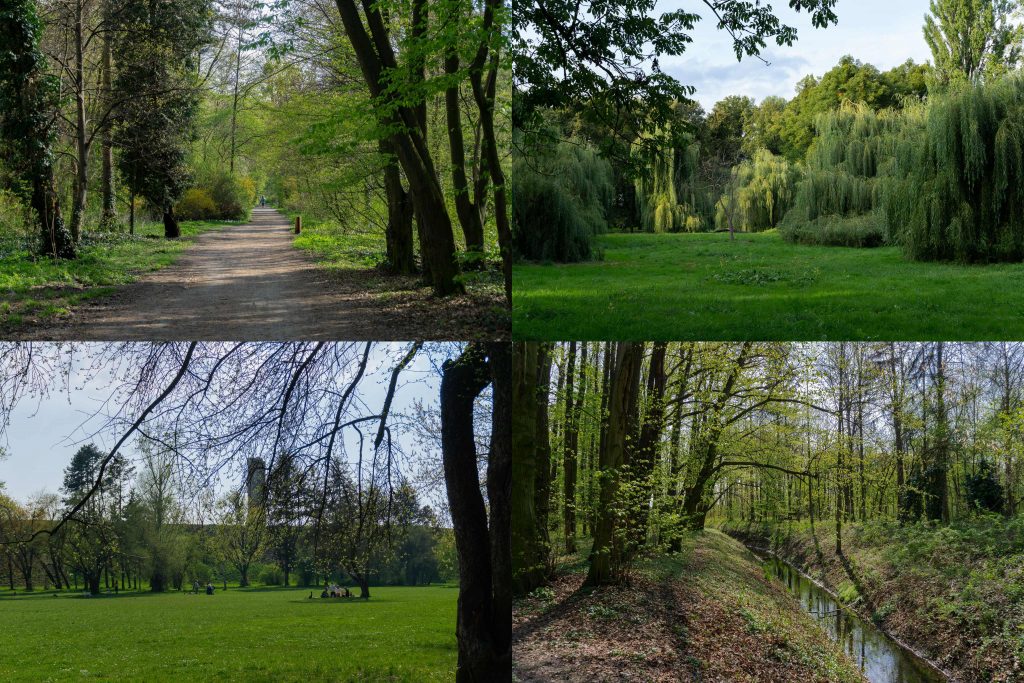
Wrocław Christmas Market- bonus thing to do in Wroclaw during winter
Wrocław Christmas Market (pl. Jarmark Bożonarodzeniowy we Wrocławiu) is one of the best Christmas markets in Poland and also one of the most beautiful in Europe. It’s located on the Wrocław main Market Square, Salt Square, Świdnicka Street, and Oławska street. It’s usually open from mid-November to the end of December. There you’ll be able to try Polish and international cuisine, as well as buy many products perfect for gifts, decorations, souvenirs, etc.
Our advice: if you’re not a fan of crowds visit Wrocław Christmas Market on any other day than on the weekend, as it can get REALLY busy then and take away all the joy.
Best places to visit around Wroclaw, Poland
If you want to discover more places in Lower Silesian voivodeship here are some of our recommendations:
- Visit Ślęża Landscape Park (pl. Ślężański Park Krajobrazowy) and climb Ślęża mountain peak
- Take a trip to Karkonosze National Park (Karkonoski Park Narodowy) and climb Śnieżka mountain peak, see Karpacz, and visit Wang Church (pl. Kościół Wang)
- During hot days relax and sunbathe on Zalew Mietkowski
- Visit Książ Castle (pl. Zamek Książ) in Wałbrzych
- Take a train to Görlitz, a small charming German town on the Polish-German border
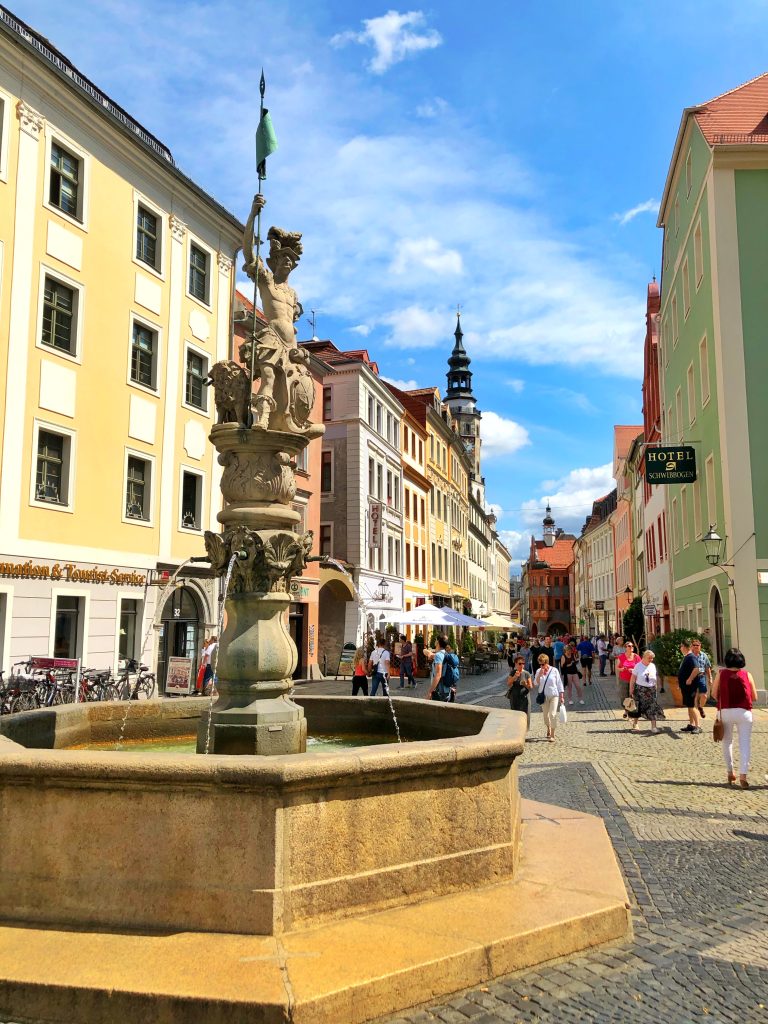
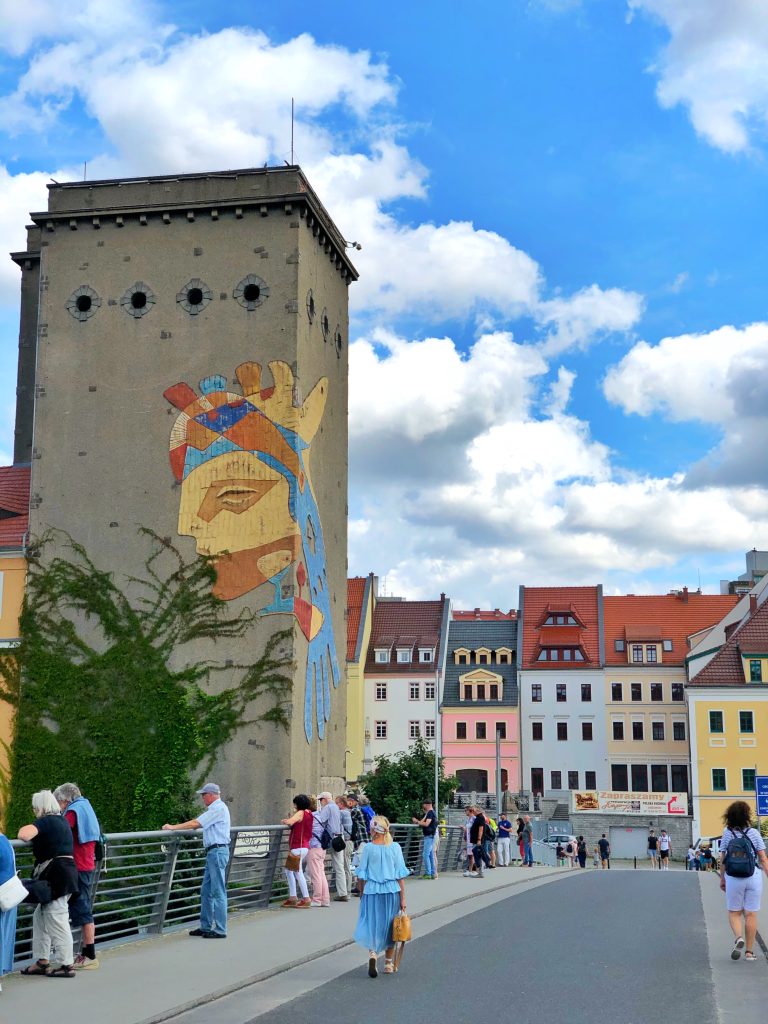
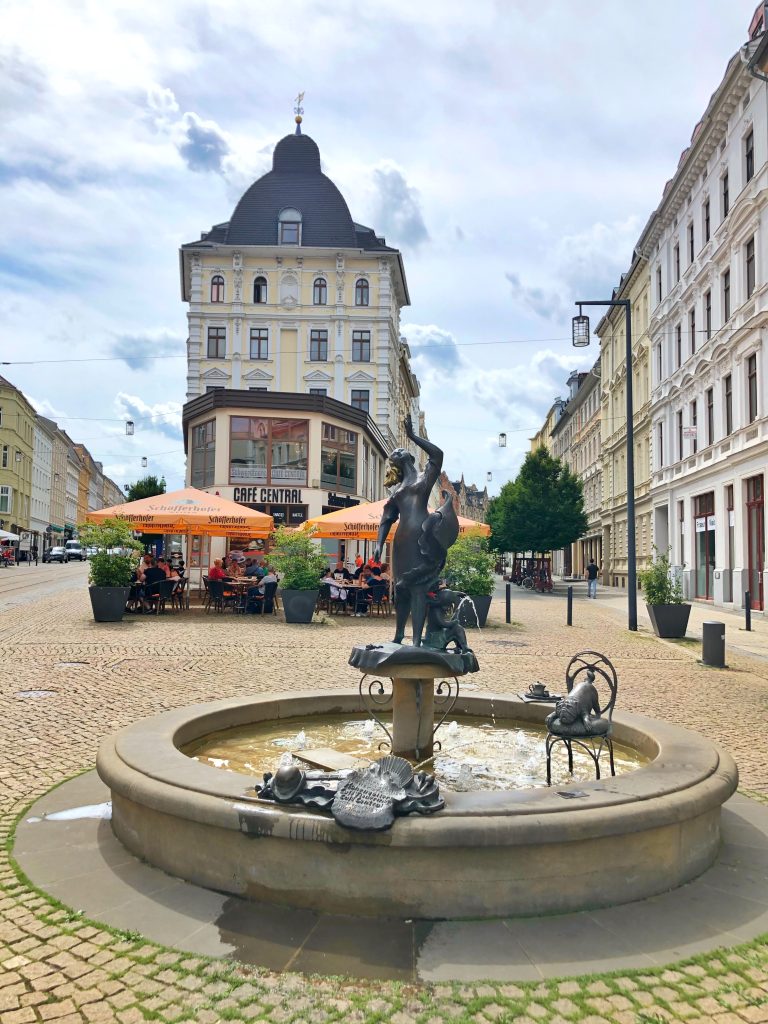
Görlitz, Germany. Photos source: Carolin | Solo Travel Story
Polish food to try while in Poland
Want to try typical Polish cuisine? Look for foods like:
- pierogi
- bigos
- śledzie w śmietanie
- pączki
- żurek
- kotlet schabowy
- barszcz
- Polish crispy bread & rolls
Best restaurants and food places to visit in Wroclaw, Poland
We won’t lie in saying that the Wrocław food scene is AMAZING! That was one of the reasons we loved living there. So far in no other city, we came across so many great restaurants offering high-quality food. Currently, the first thing we do while in Wrocław is visiting our favorite places.
Our favorite food places in Wrocław
More recommendations of great food places to visit in Wroclaw:

Ice creams, sweets, and snacks:
Wrocław Coffee scene:
If you’re a coffee lover you might want to check those places:
Of course, there are also world-popular chains like Starbucks, Costa Coffee, So! Coffee, or Green Caffè Nero.
Wrocław Craft Beer scene
Are you a beer lover? Yes? You’re lucky as Wroclaw can boast of good craft beers. You can try them in places like:

How to get to Wrocław, Poland?
Wrocław is located about 360km from Warsaw, 270km from Cracow, and 180km from Poznań. The most convenient way to get to Wrocław is by car, bus, or by train.
Airports near Wrocław
Wrocław has its own airport. The next closest ones are in Poznań (180km away) and Katowice (205km away). The easiest way to get from Wrocław airport to the city center is to take a bus (line 106 or 206) which arrives near the main train station. You can also take a taxi (70-90zł). From other airports, you can take direct buses to Wrocław. To learn more about connections that might interest you visit rome2rio.com website.
Where to park in Wrocław?
If you choose to travel by car you need to know that cars are successively being pushed back from the city center and it’s quite hard to find a parking place for a car. Your best option is probably to find accommodation with parking space and then travel by bus/tram in the city center. But if you must use a car we find your best shot is to park in shopping malls, as they are cheaper than parking meters and usually it’s easier to find an available spot there.
To Wrocław by bus
You can easily get to Wrocław by bus, especially from other bigger cities. For example, the journey from Krakow will take about 3h15min and will cost €6-9. From Warsaw, the journey takes about 4h40min and costs about €11-17. To learn more about bus connections that might interest you visit rome2rio.com website.
To Wrocław by train
You can also get to Wrocław by train, as Poland is quite well connected by trains. For example, a trip from Katowice will take about 2h (€4-16), from Warsaw 4h (€11-20), and from Gdańsk 5h (€11-22). However, we feel obligated to warn you that trains are often unreliable and delayed. To learn more about connections that might interest you visit PKP’s official website.
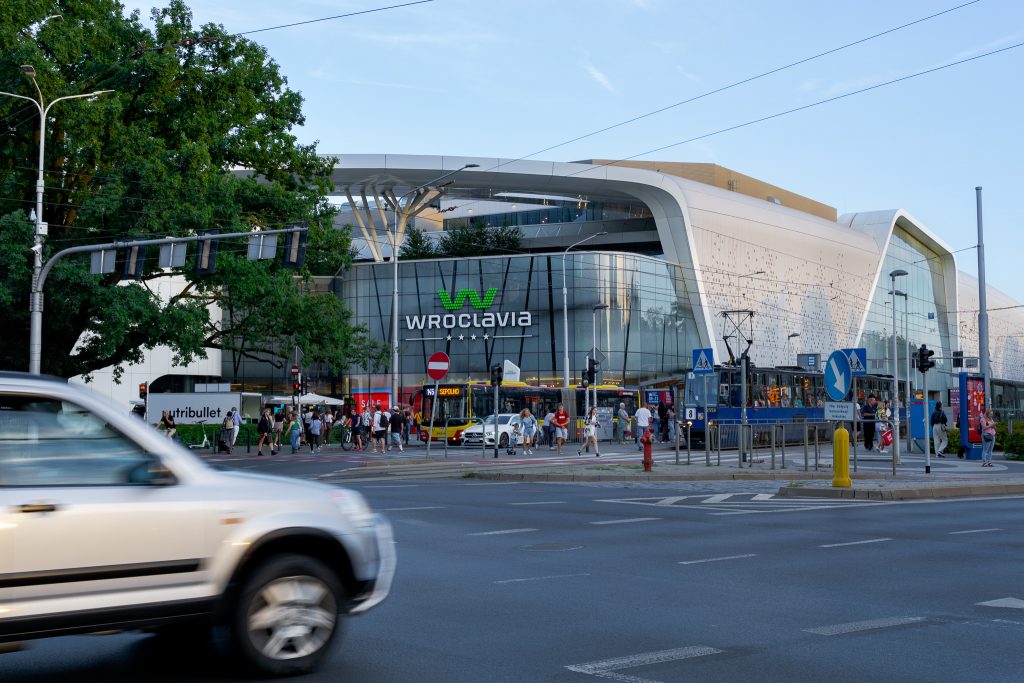
Things to do in Wrocław, Poland – Summing up
Wrocław is such a beautiful Polish city, isn’t it? If you’re into charming old towns full of history and hidden gems, hunting cute little iron creatures, amazing food scene, big yet cozy places with many green spaces, and weird architecture – it’s a perfect place for you! Hope our locals’ Wrocław travel guide helped you choose the best places to visit in town, and as you can see, there are plenty of them. Enjoy your time and let us know later if you fell in love with Wrocław too.
Our opinion about Wrocław
Before we started our digital nomads journey we had lived in Wrocław for many years. During that time we got to know it pretty well and without hesitation, we can say that this is our favorite city in Poland. Until today we really enjoy coming back, and we still treat it as our Polish home. While traveling we miss it sometimes, especially its amazing restaurants. Really! So far, nowhere in the world, we experienced so many restaurants serving top-notch food.
What we don’t like about it? Well, it’s a big and usually busy city that sometimes can be overwhelming (especially during the summer months and December). We also don’t like how neglected and dirty it is. Not that there is trash lying on the streets everywhere, but it’s full of horrible graffiti on the walls even in the city center. There’s also a problem with homeless/drunk people, especially near the main train station, which is quite annoying. Pollution/smog is also a huge drawback for us (noticeable mostly during autumn/winter months). But no place is perfect and overall we really liked living in Wrocław.

Accommodations and map
Check out various recommended places below.
Where to sleep in Wrocław?

Ibis Styles Wroclaw Centrum
Ibis Styles Wroclaw Centrum is a modern and stylish hotel located in the heart of Wrocław. The hotel features 133 comfortable rooms equipped with air conditioning, free Wi-Fi, and flat-screen TVs. Guests can also enjoy a buffet breakfast, fitness center, and 24-hour reception desk services during their stay.
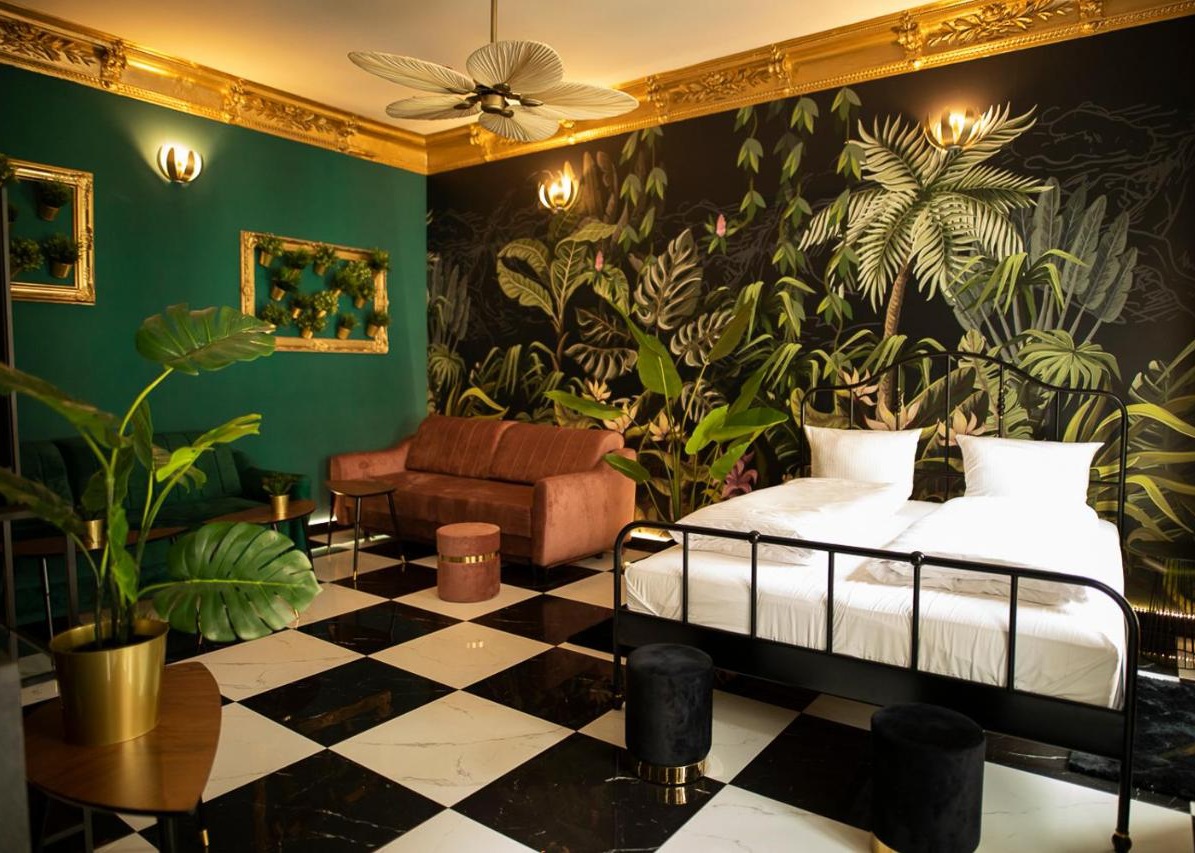
Jungle Apartments
Jungle Apartments is an excellent choice for travelers visiting Wrocław, offering a unique and stylish accommodation option. Guests will enjoy the lush jungle-inspired decor, spacious and well-equipped apartments, and the convenient location close to the city's attractions.
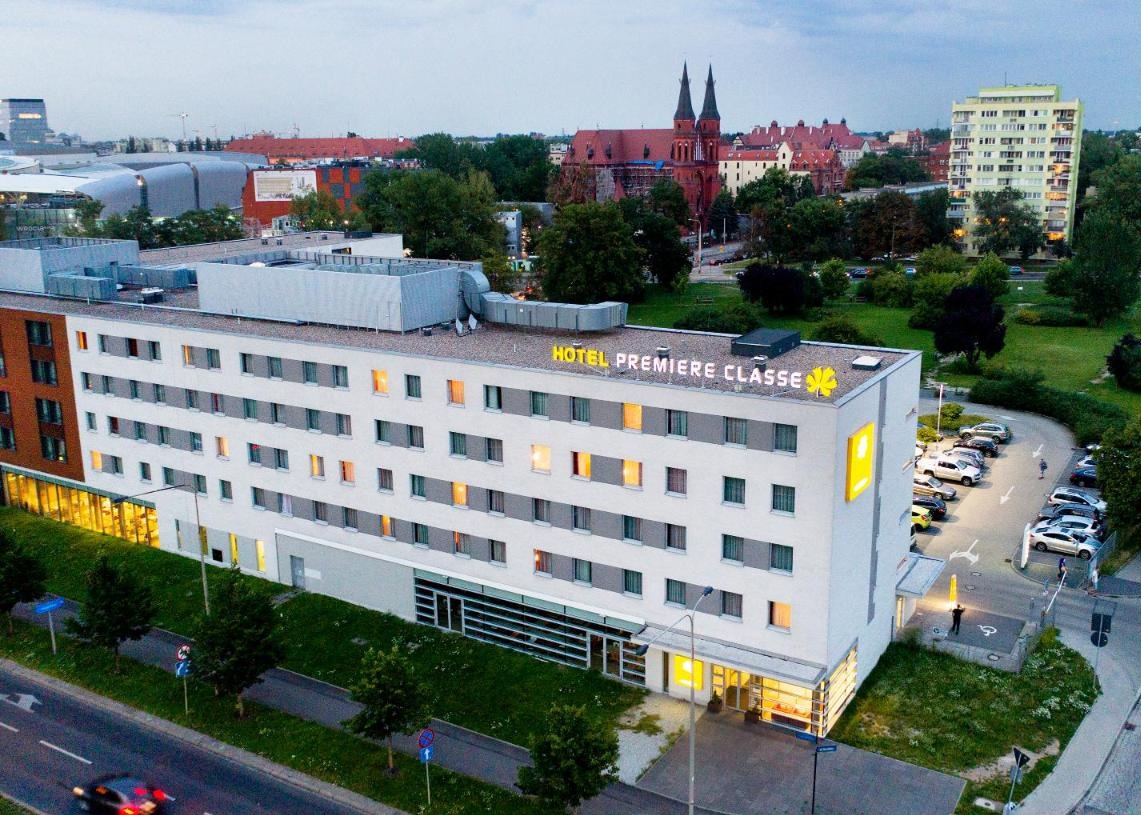
Premiere Classe
Premiere Classe in Wrocław is an excellent budget hotel for those who want to stay in the heart of the city. The hotel's prime location, comfortable rooms, and friendly staff make it an ideal choice for travelers. With easy access to public transportation and major attractions, Premiere Classe is a great option for anyone visiting Wrocław on a budget.

Retro Apartment Old Town
Retro Apartment Old Town is a charming and comfortable accommodation located in the heart of Wrocław's historic district. This stylish apartment offers a unique retro-inspired interior with vintage furniture and decor, as well as modern amenities like free Wi-Fi and TV. Guests can enjoy the convenience of a fully equipped kitchen and a comfortable living room, making it a perfect choice for a short or long stay.

Hotel Mercure Wroclaw Centrum
Hotel Mercure Wroclaw Centrum is a stylish 4-star hotel located in the heart of the city. Its prime location provides easy access to many popular tourist attractions, restaurants, and shops. The hotel features modern rooms and suites, a fitness center, restaurant and bar, and conference facilities.
Accommodations photos source: booking.com
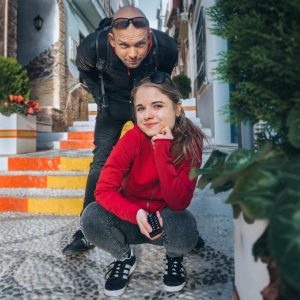
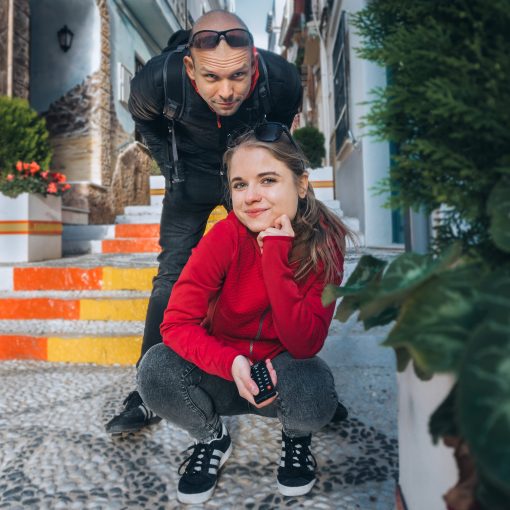
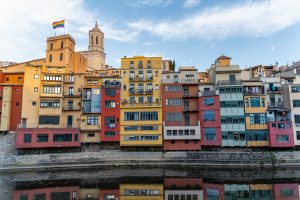
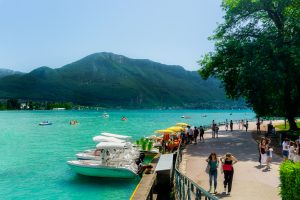
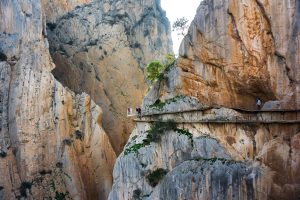


Guys, I’m seriously impressed, well done on your fantastic post and the charming introduction to Wroclaw. So much work has gone into this and I loved hearing all about your city. I listened to the pronunciation video but I’m still struggling. I think I prefer the Polish version. Those cute little gnome statues would engage me for days. Ah well, I’ll keep September in mind and maybe it works out for a visit.
Carolin | Solo Travel Story